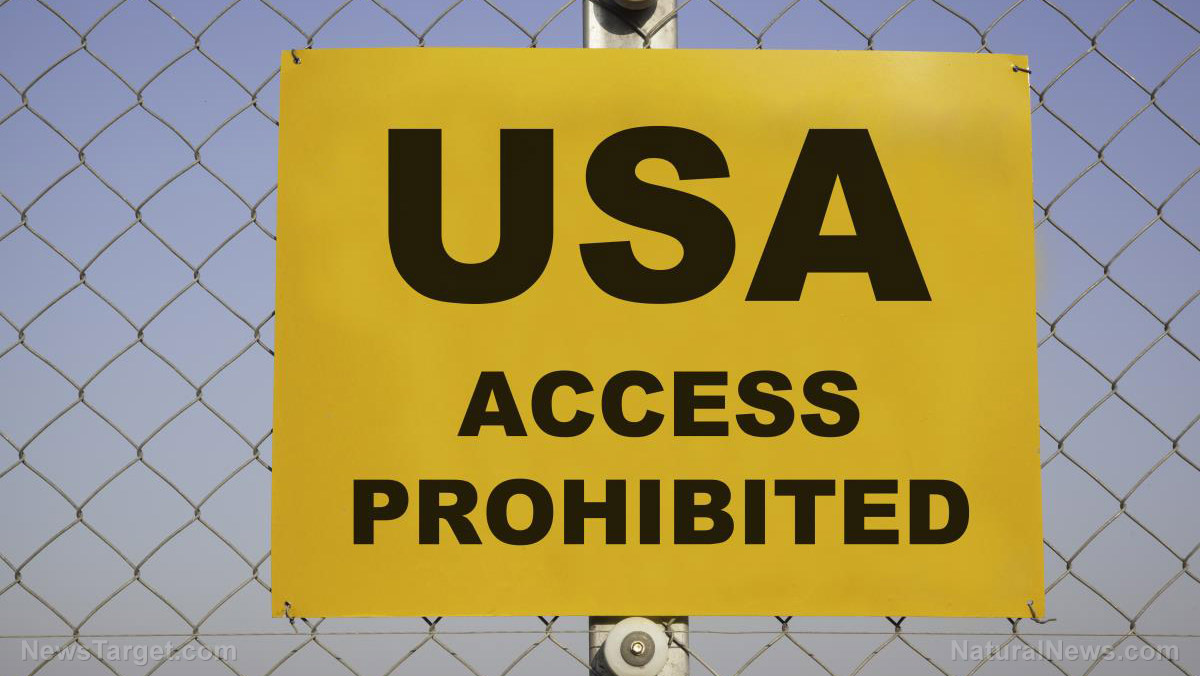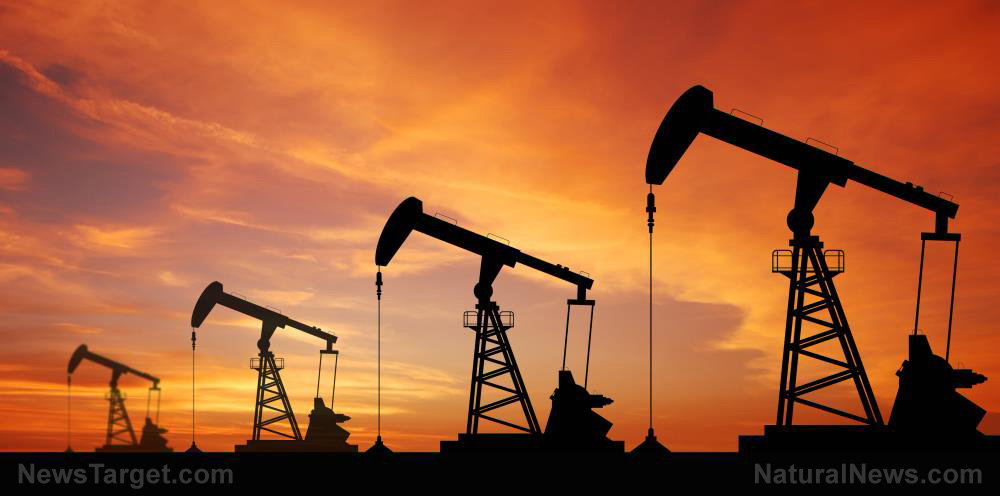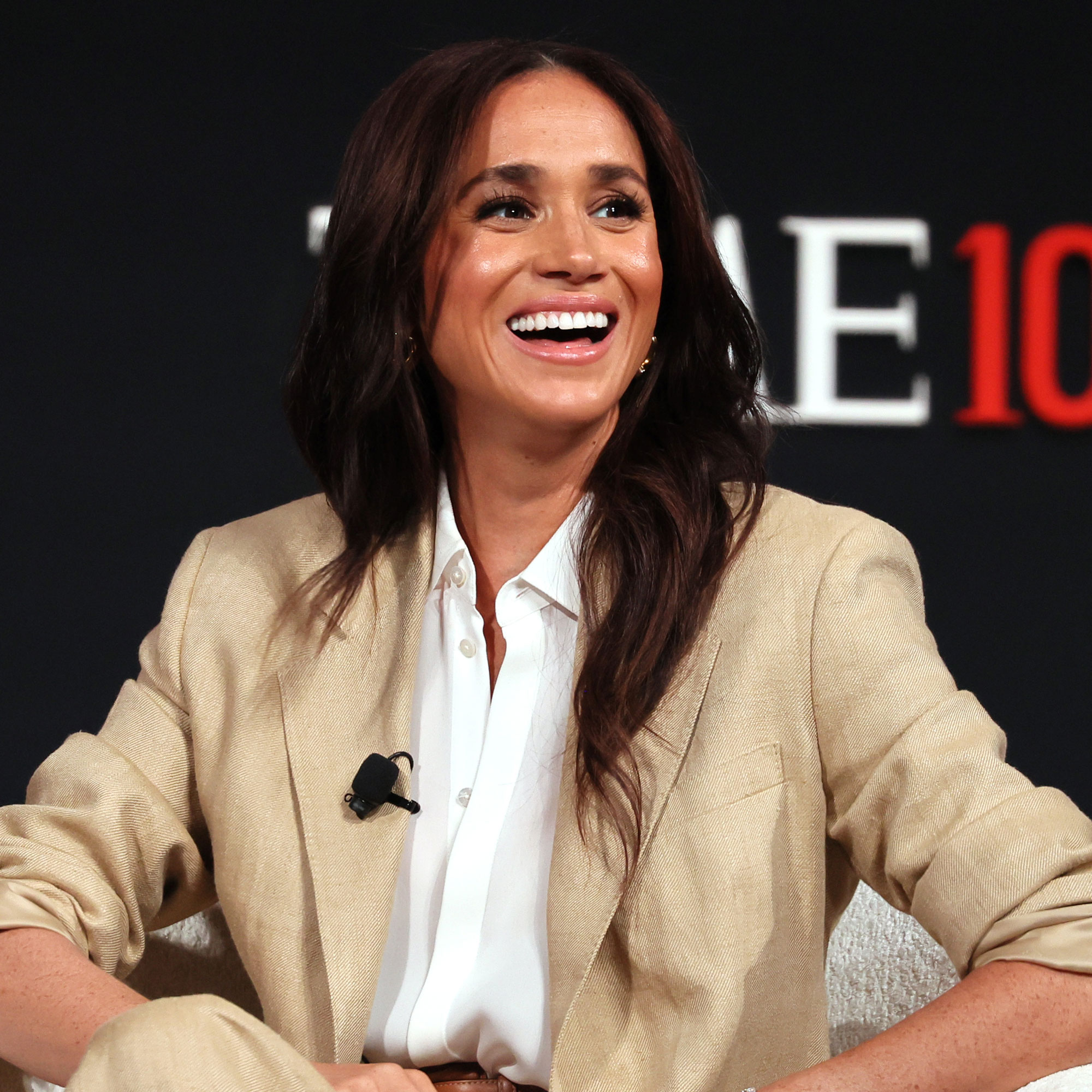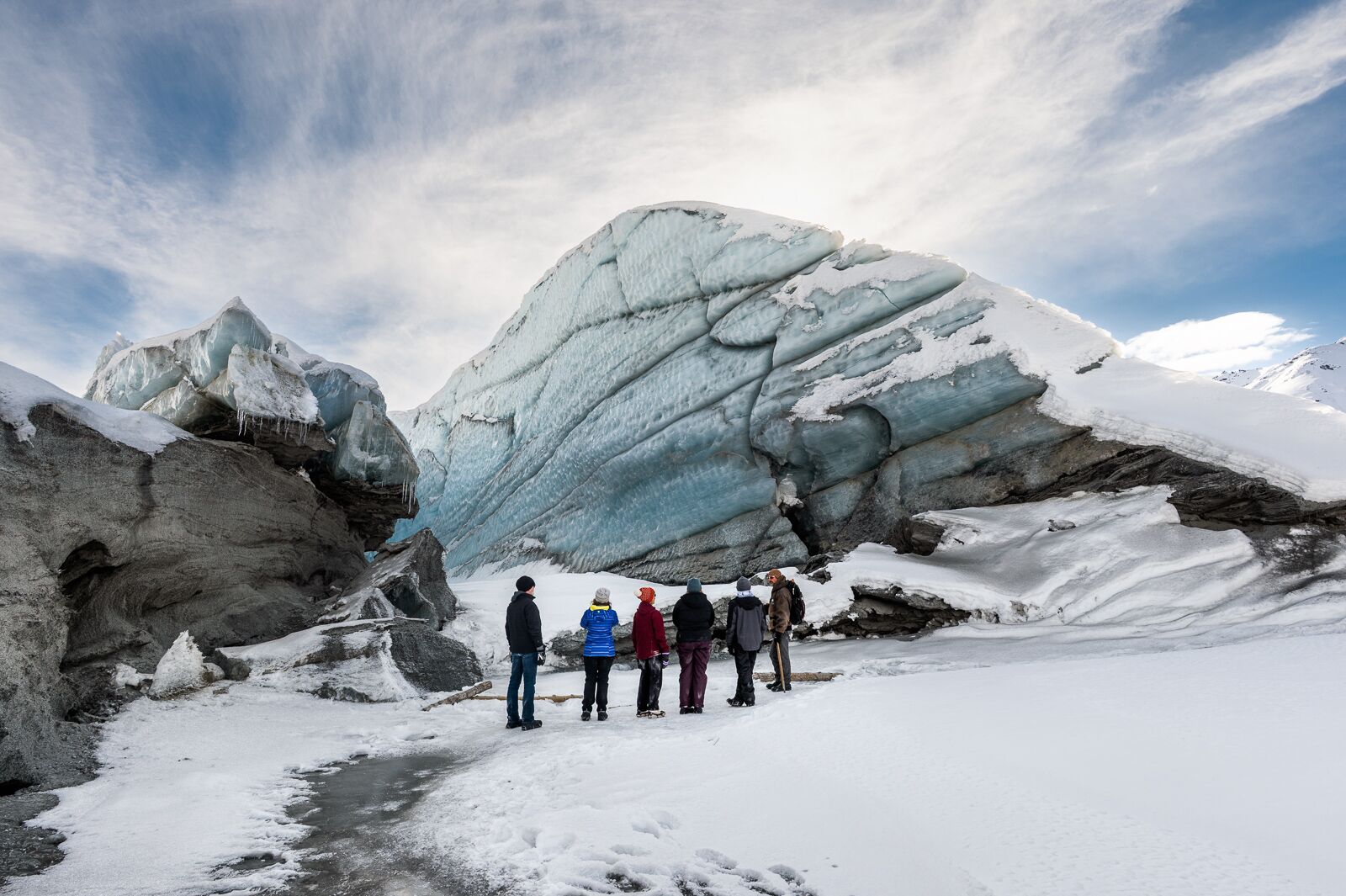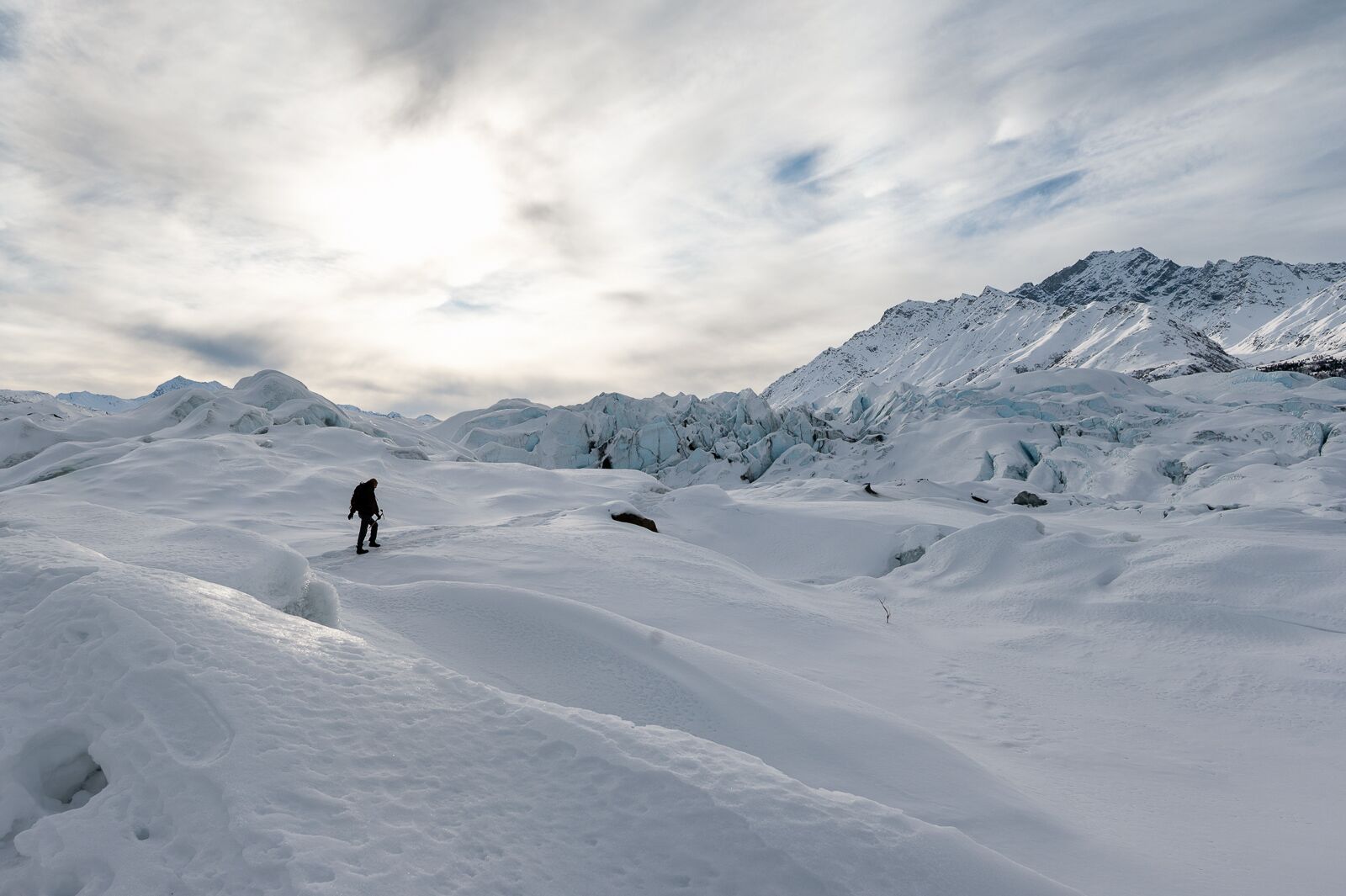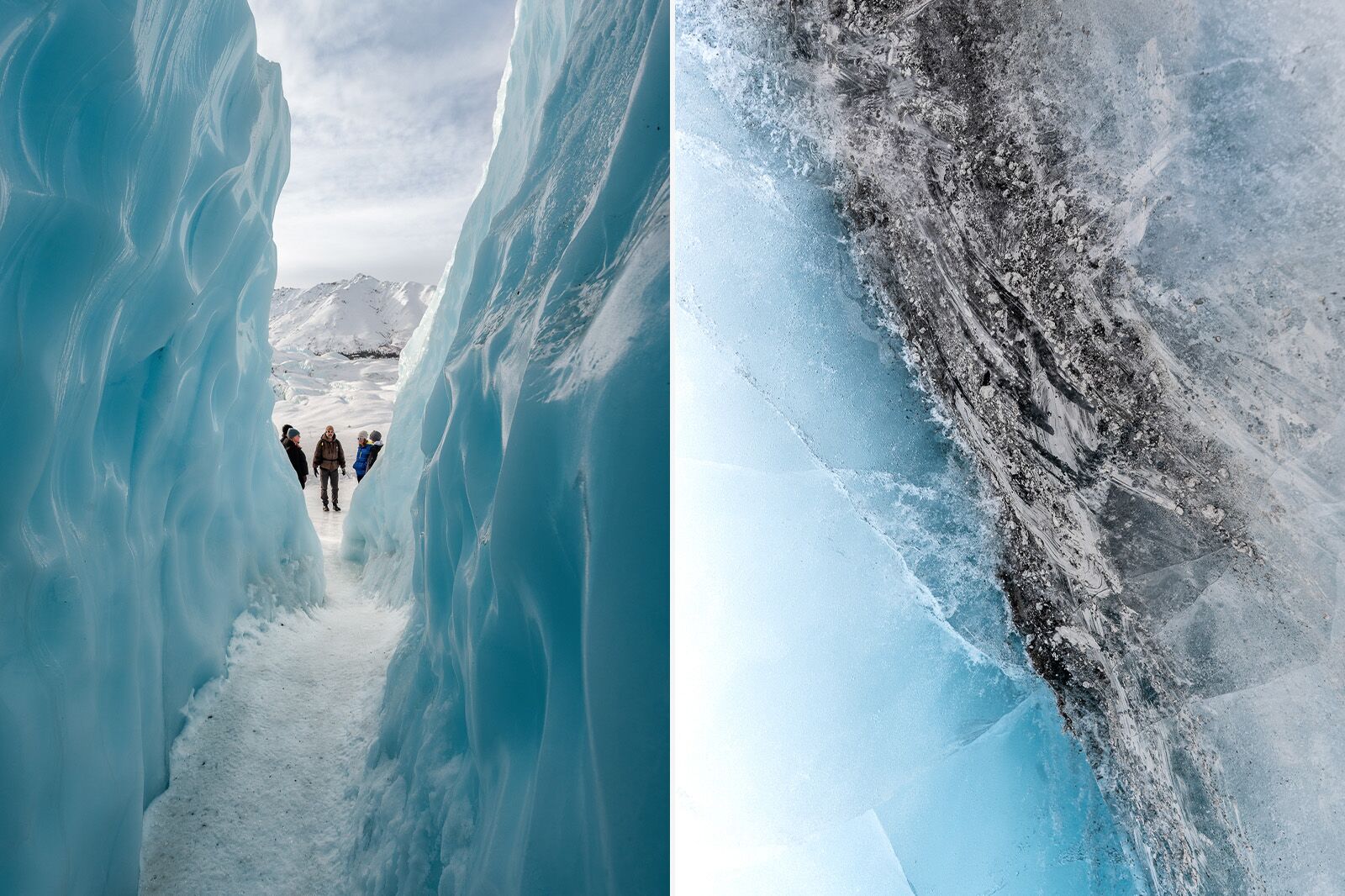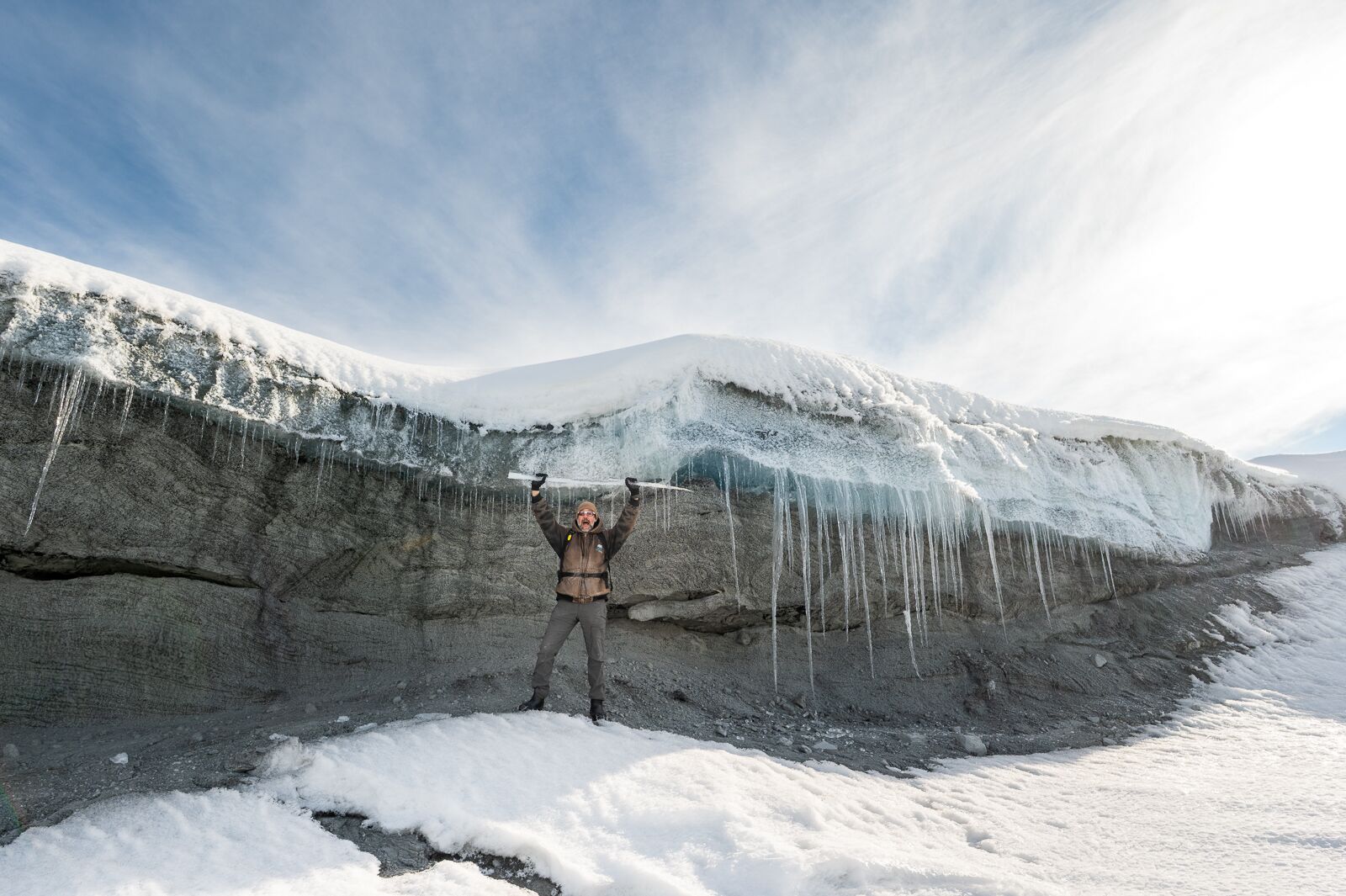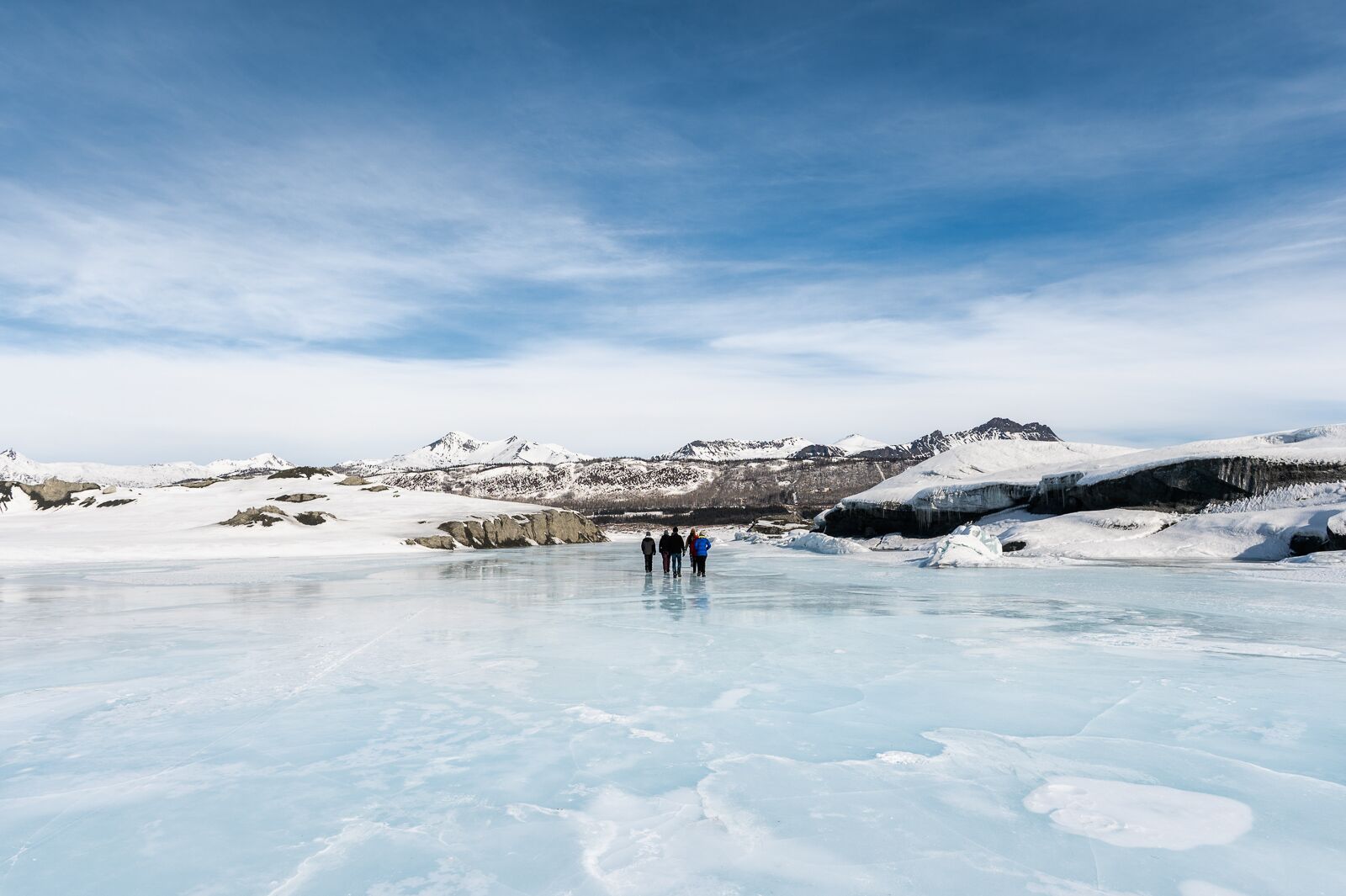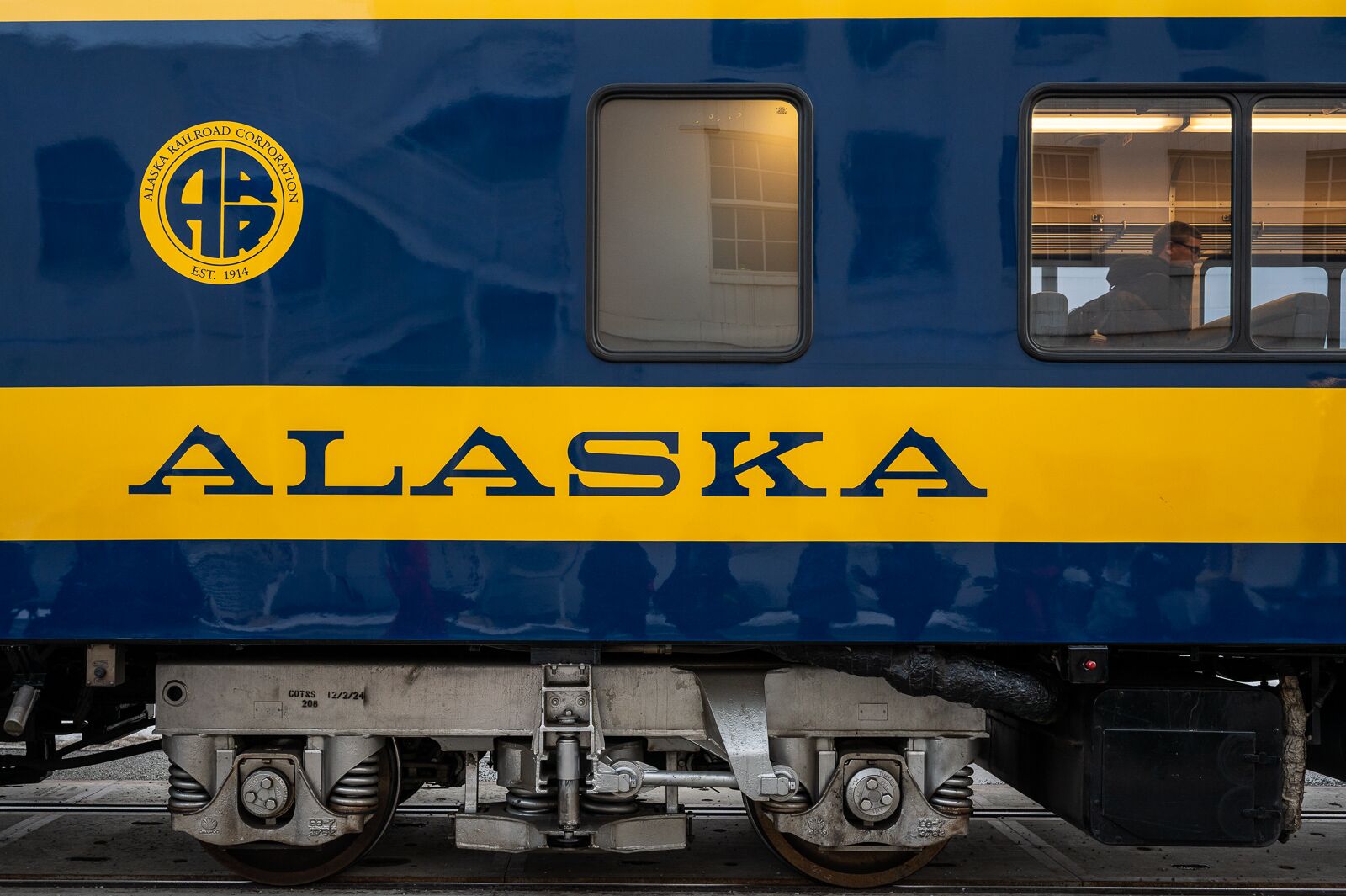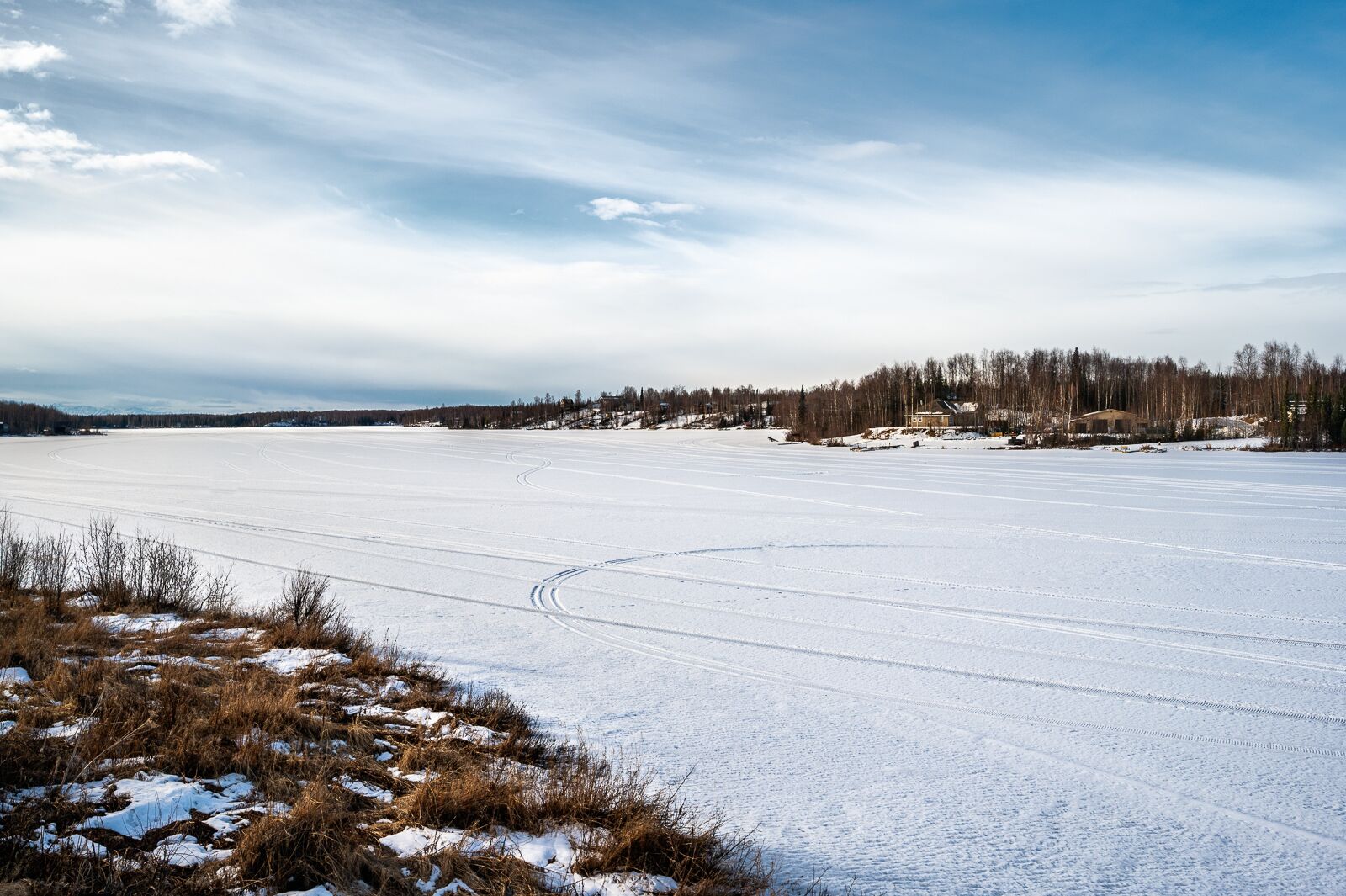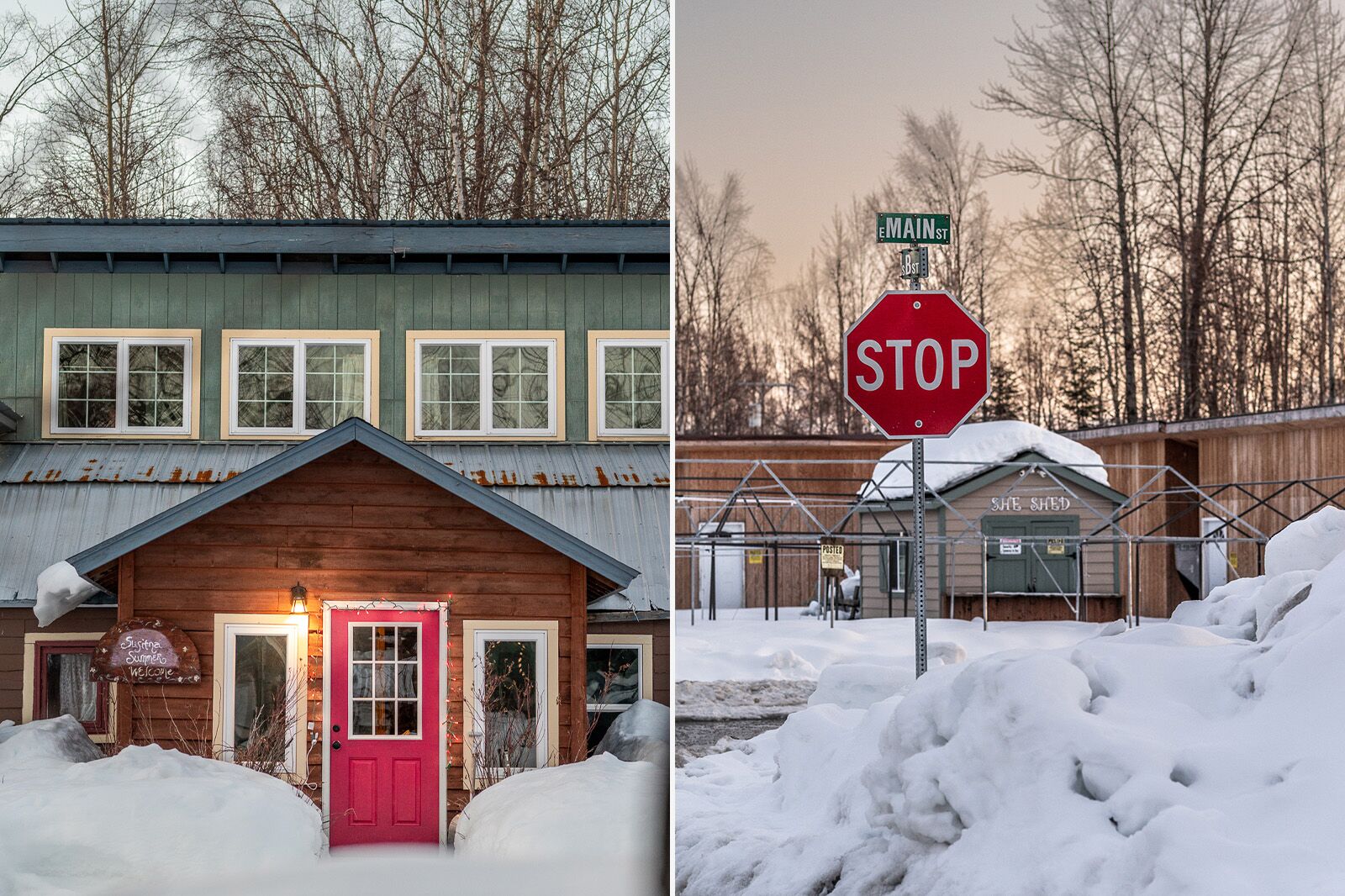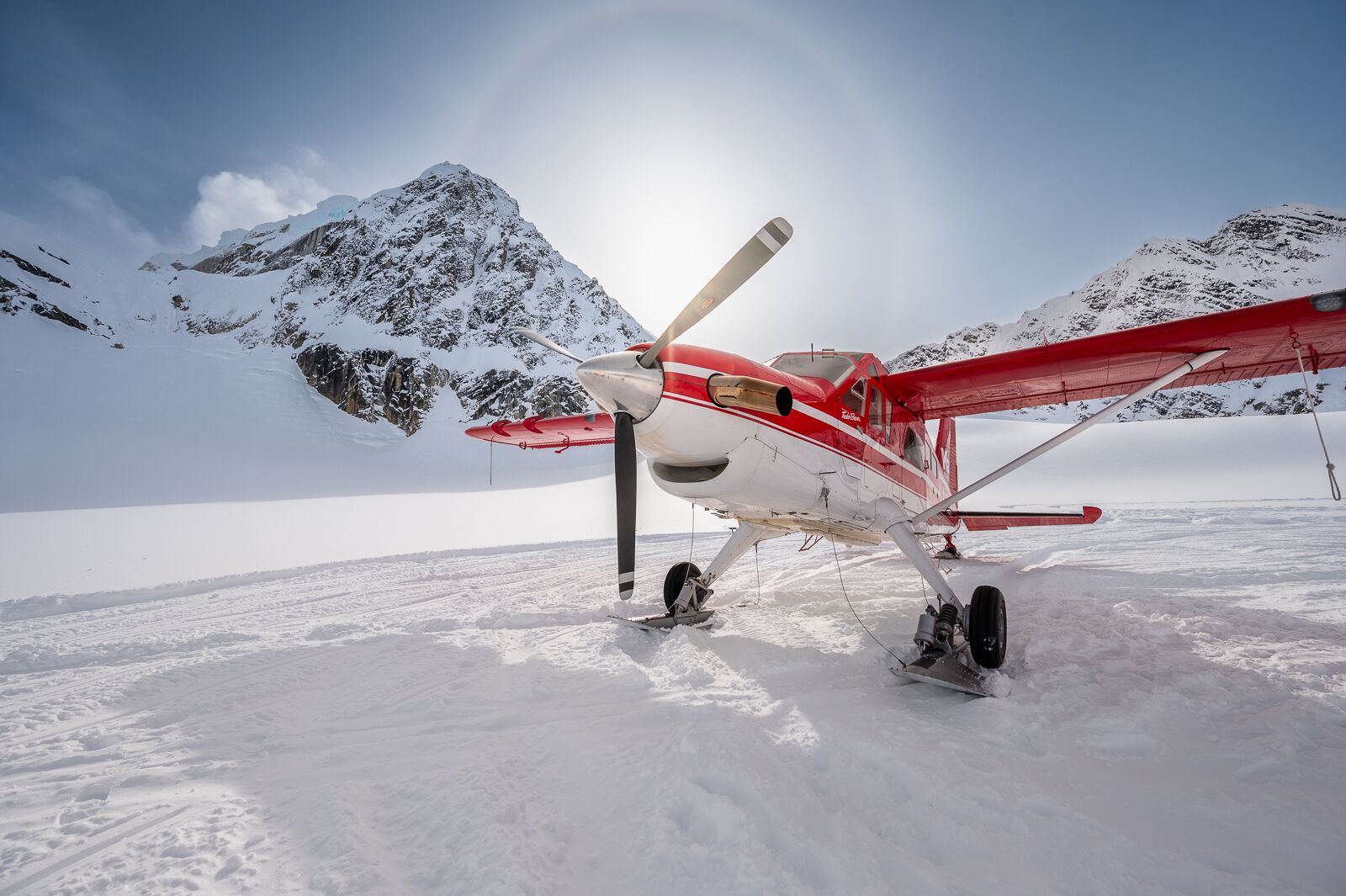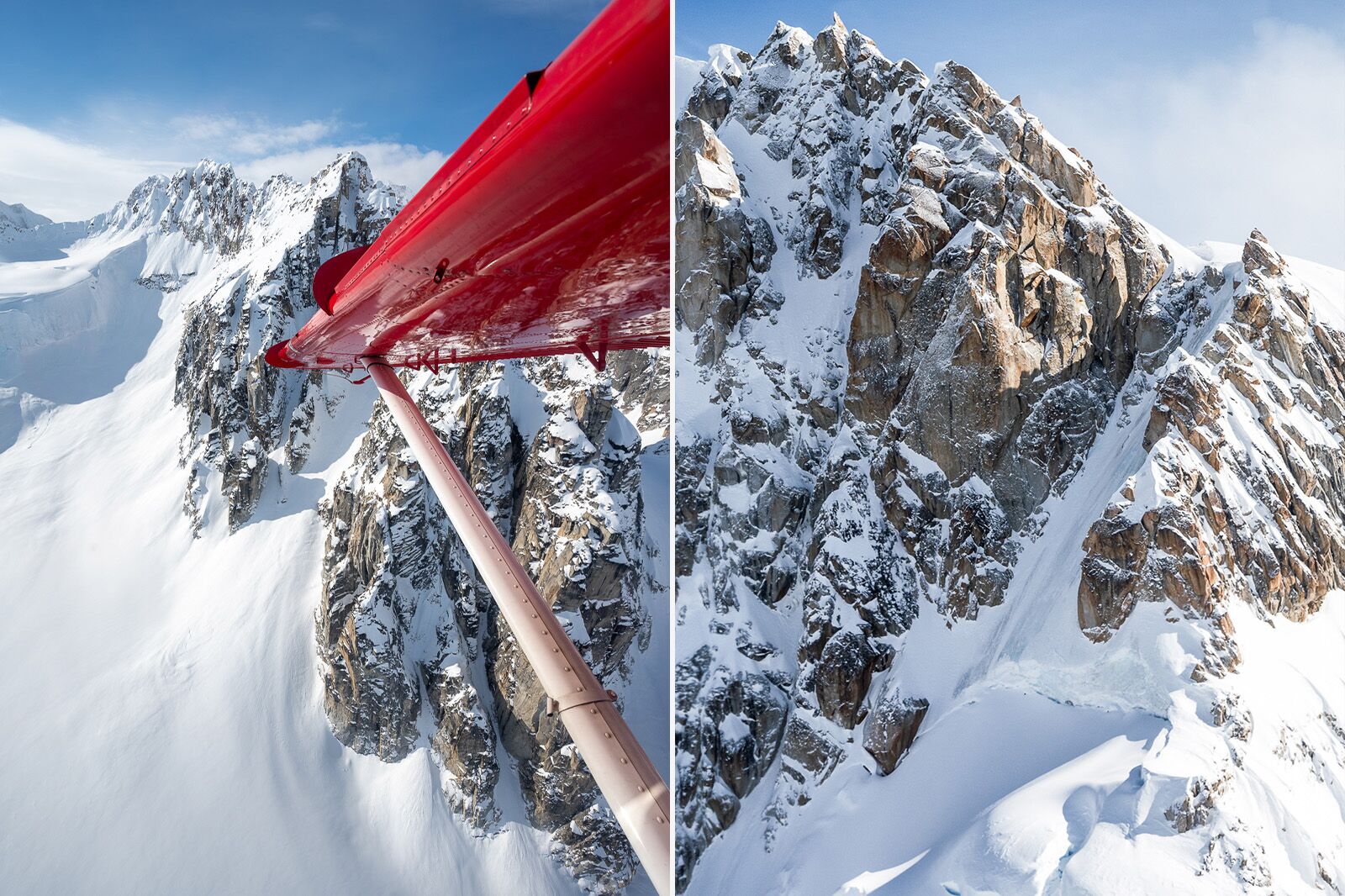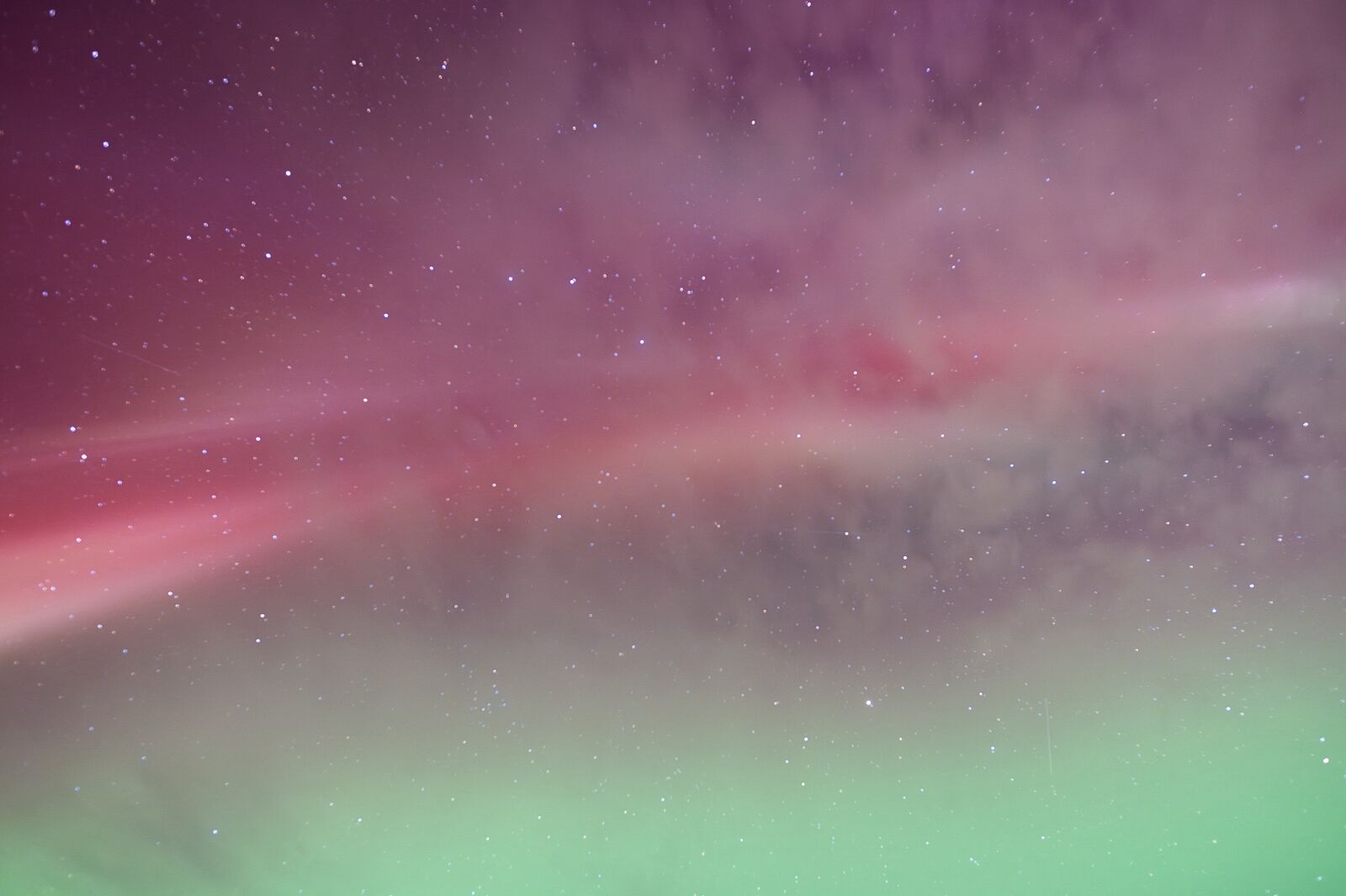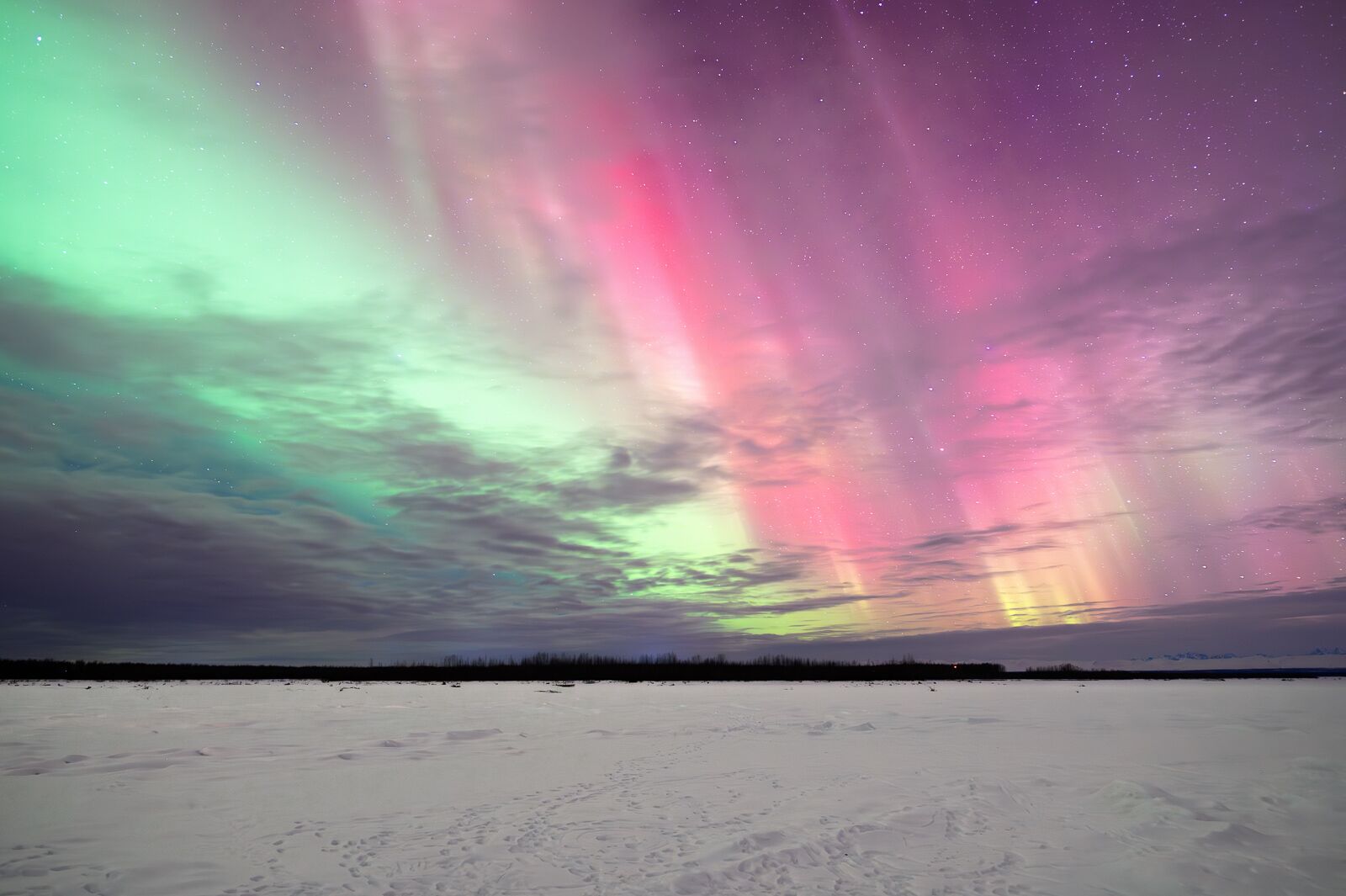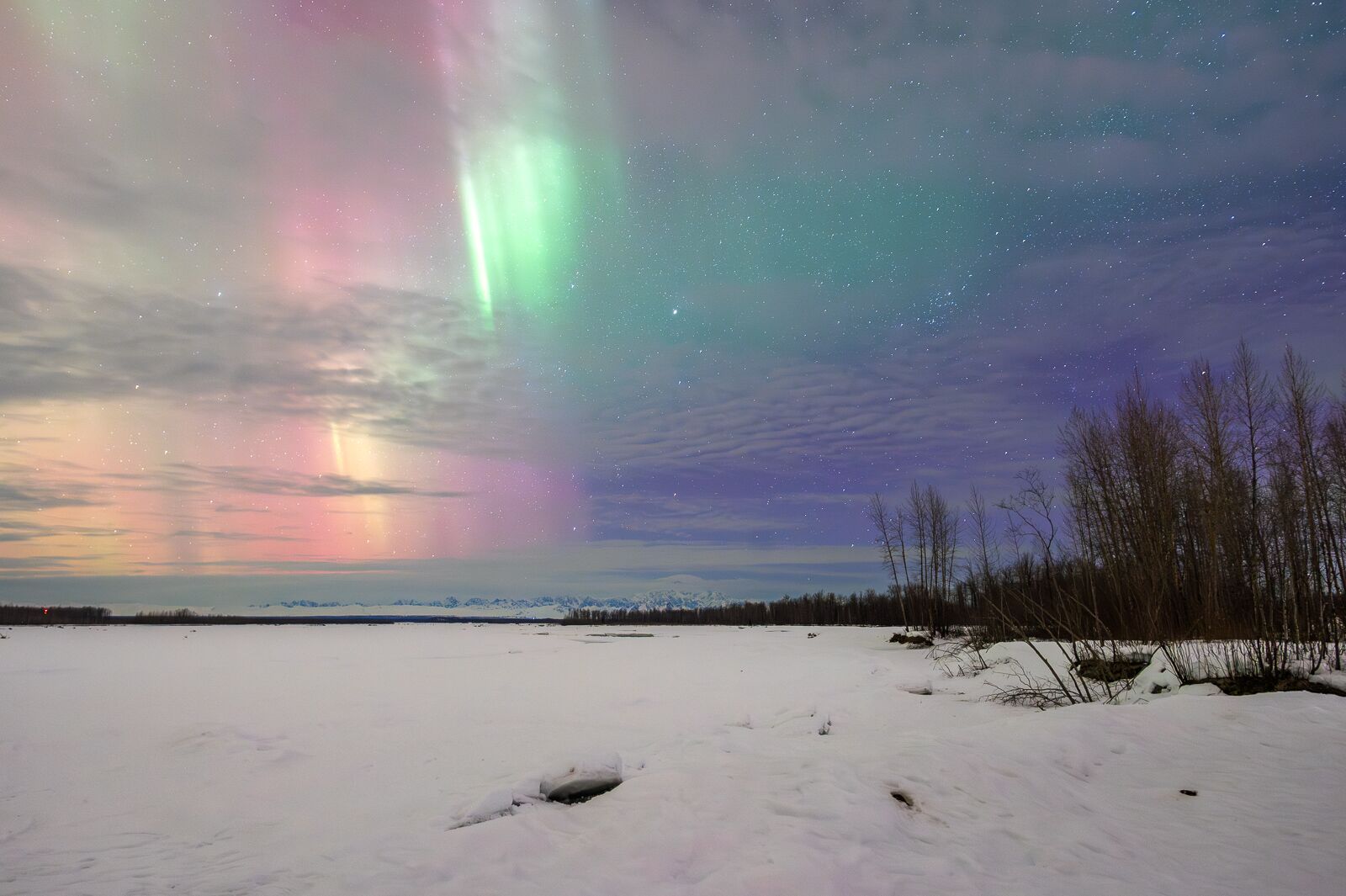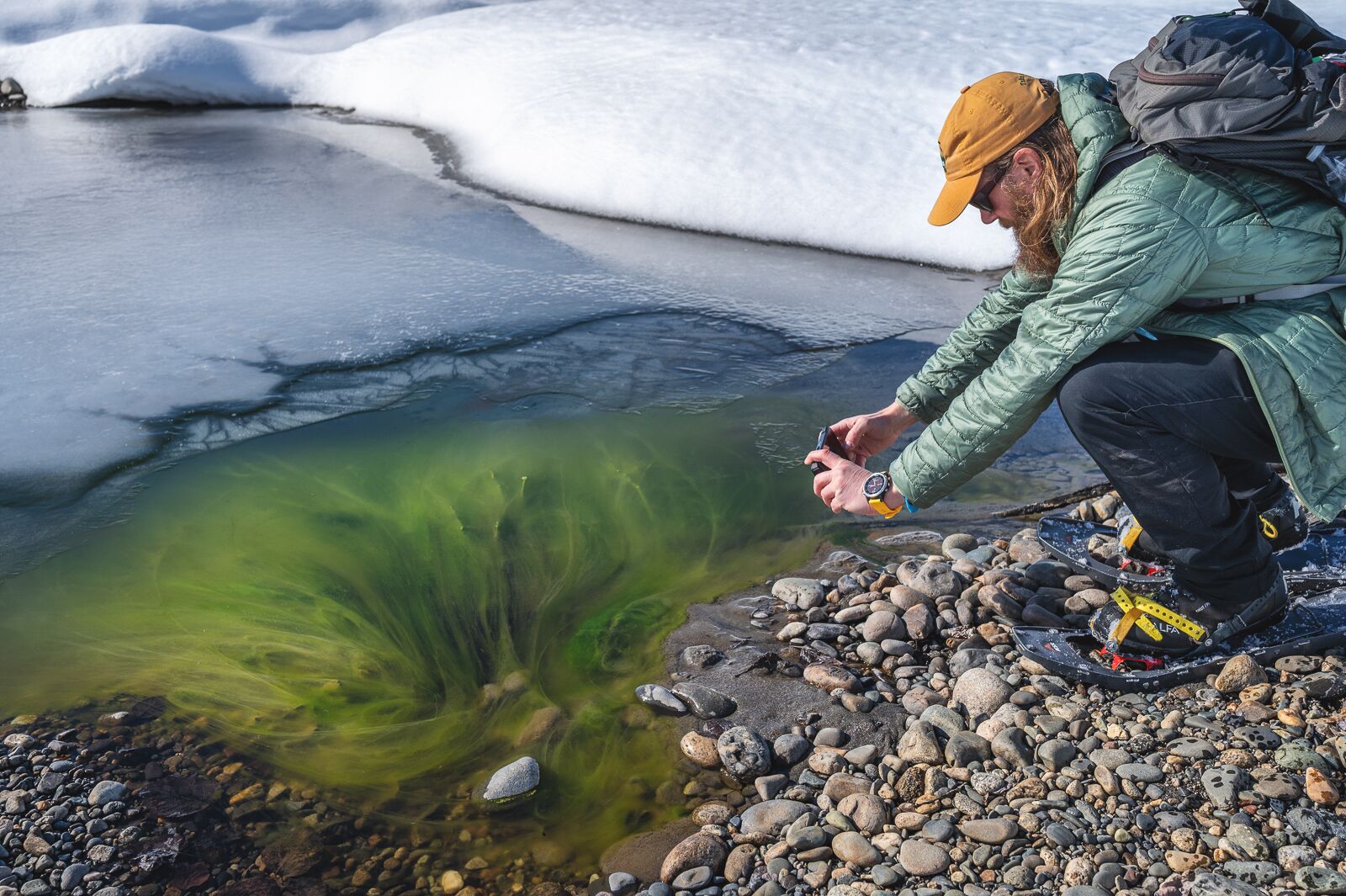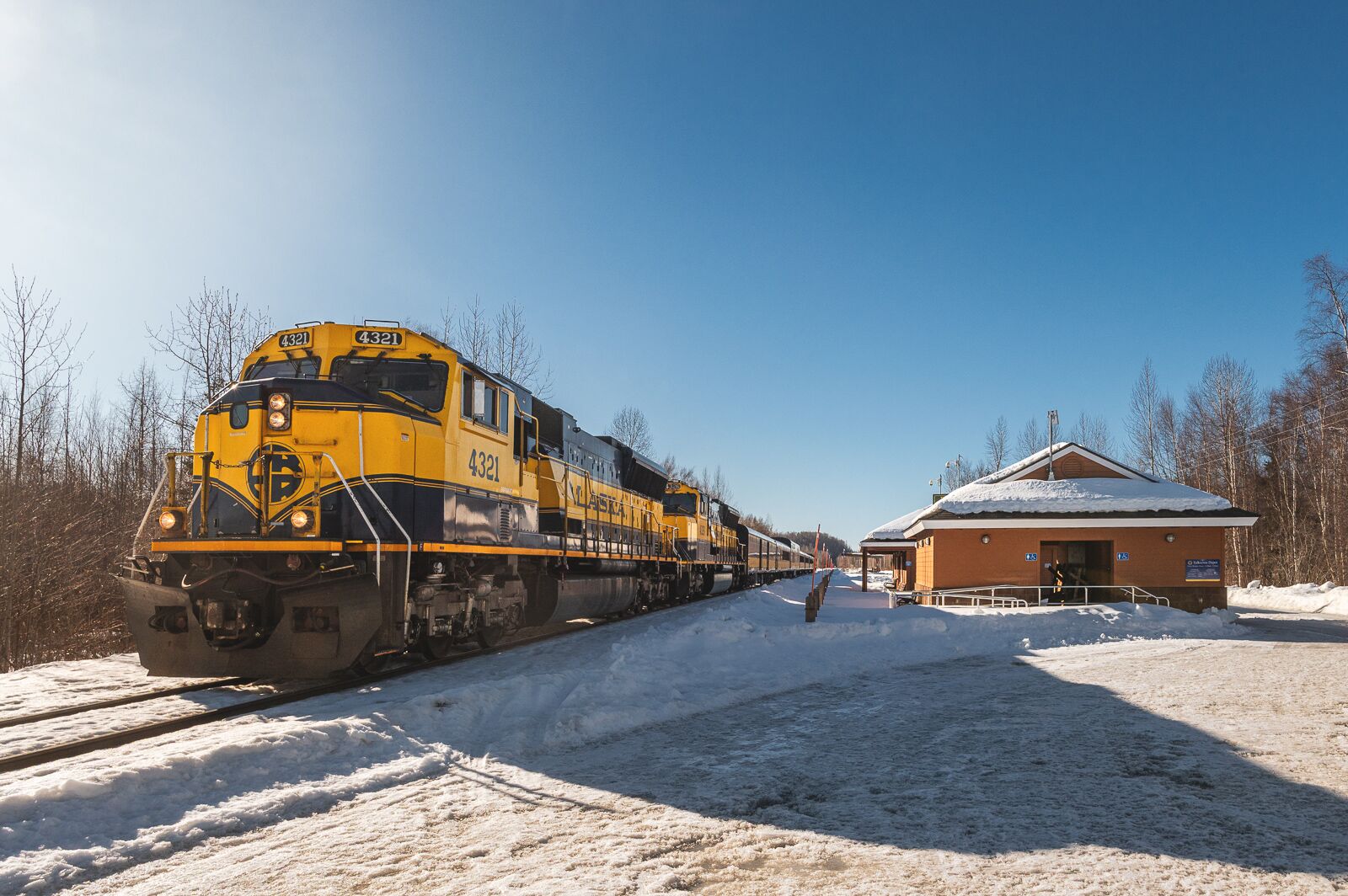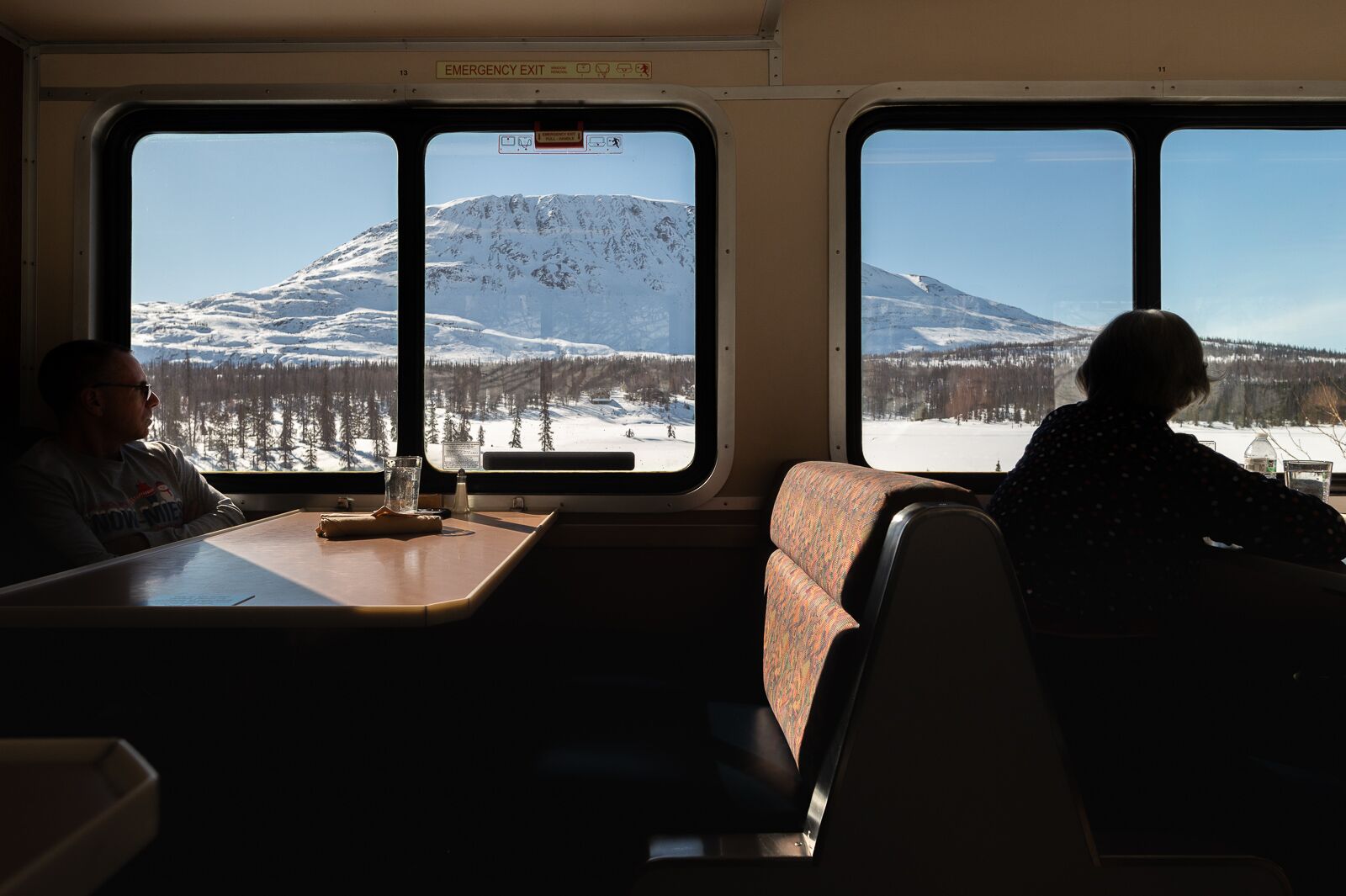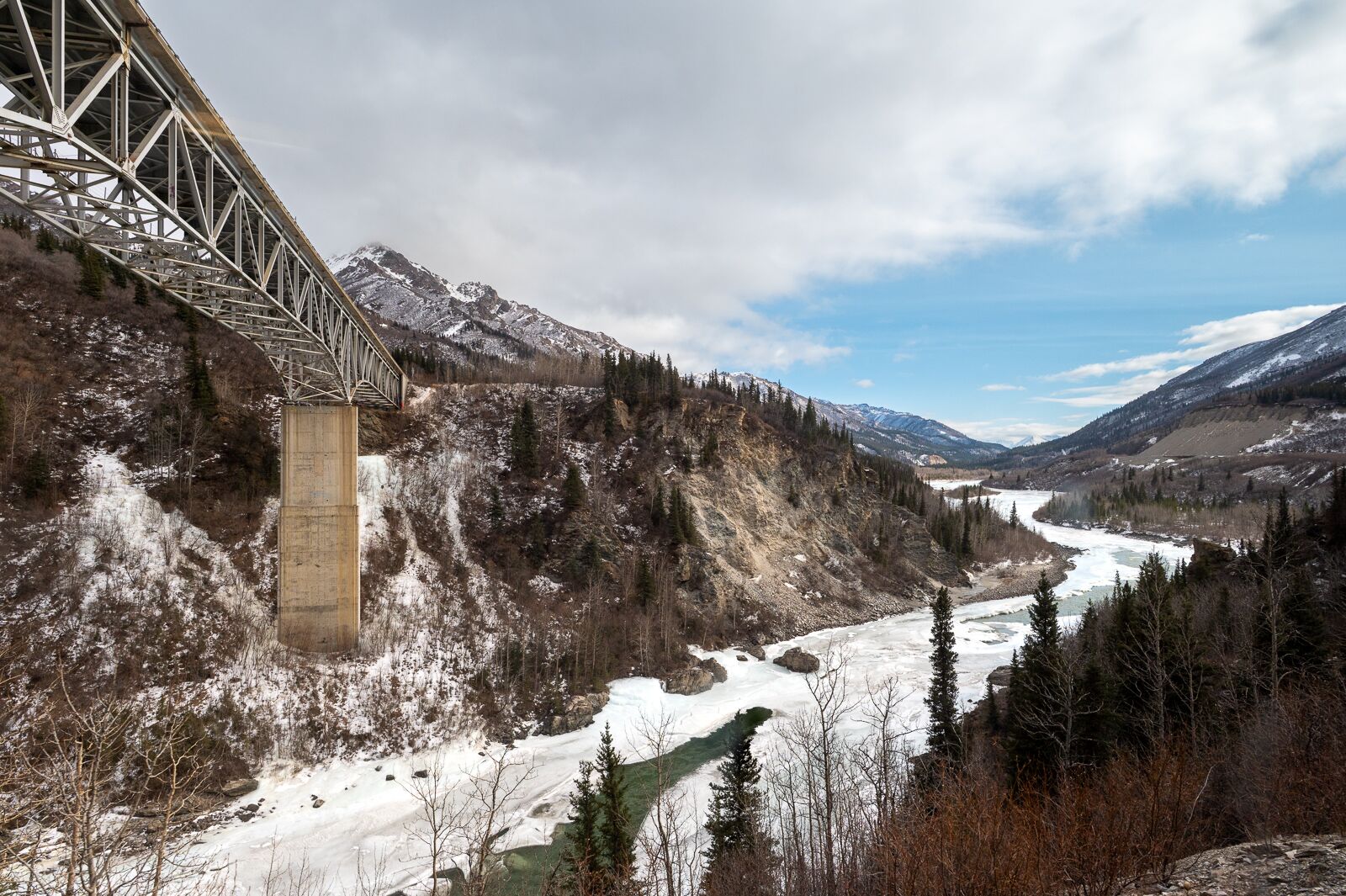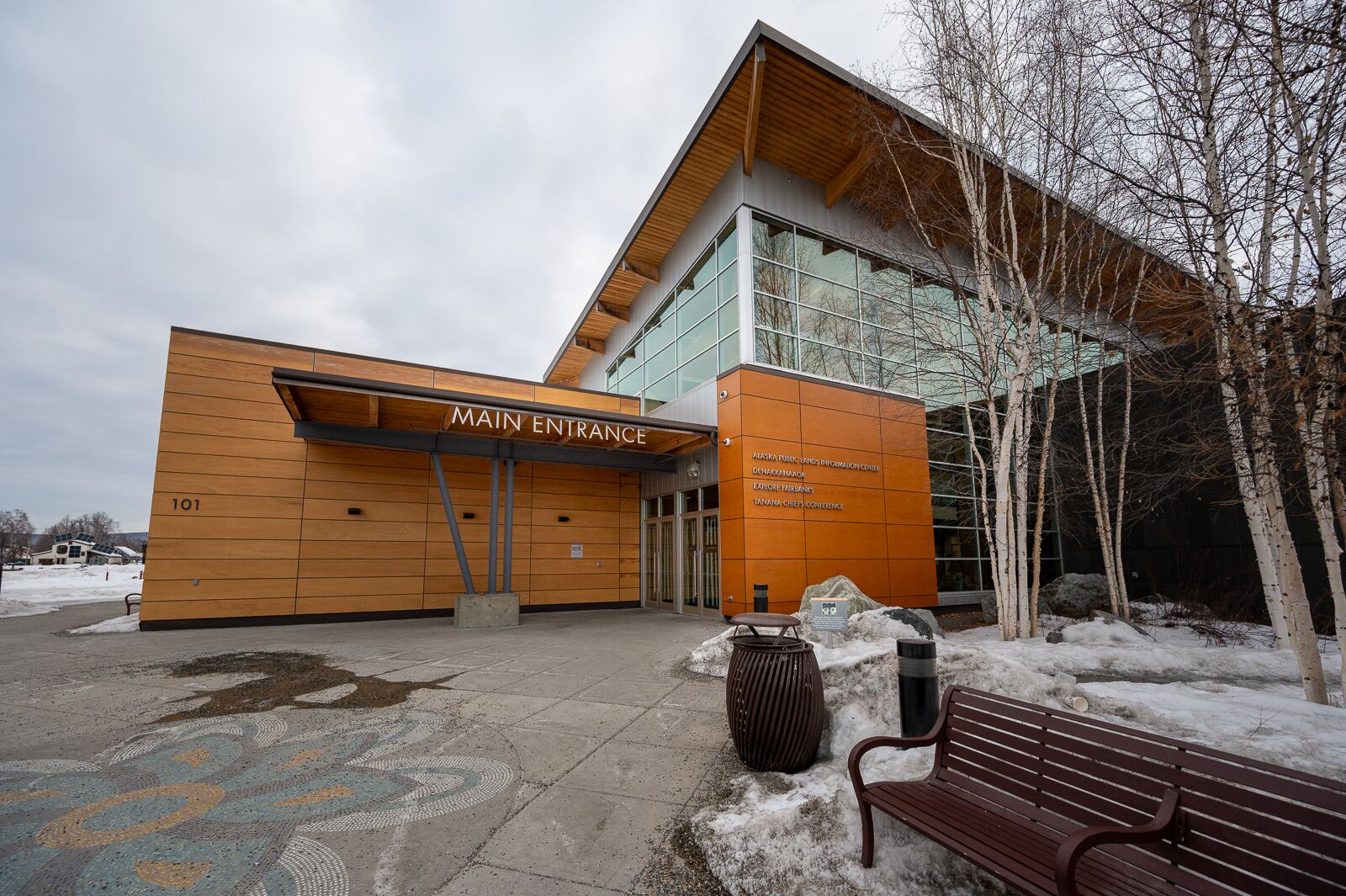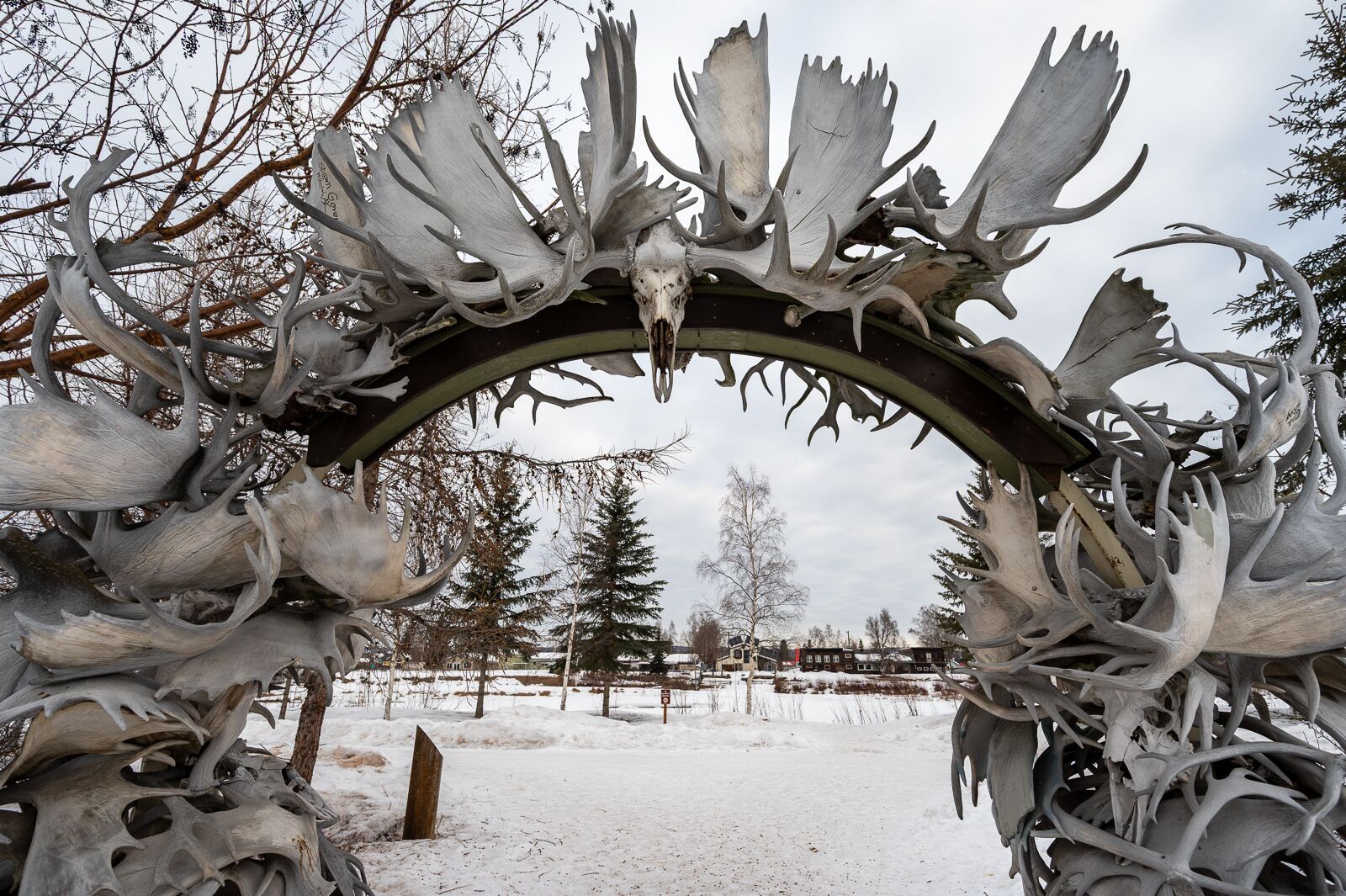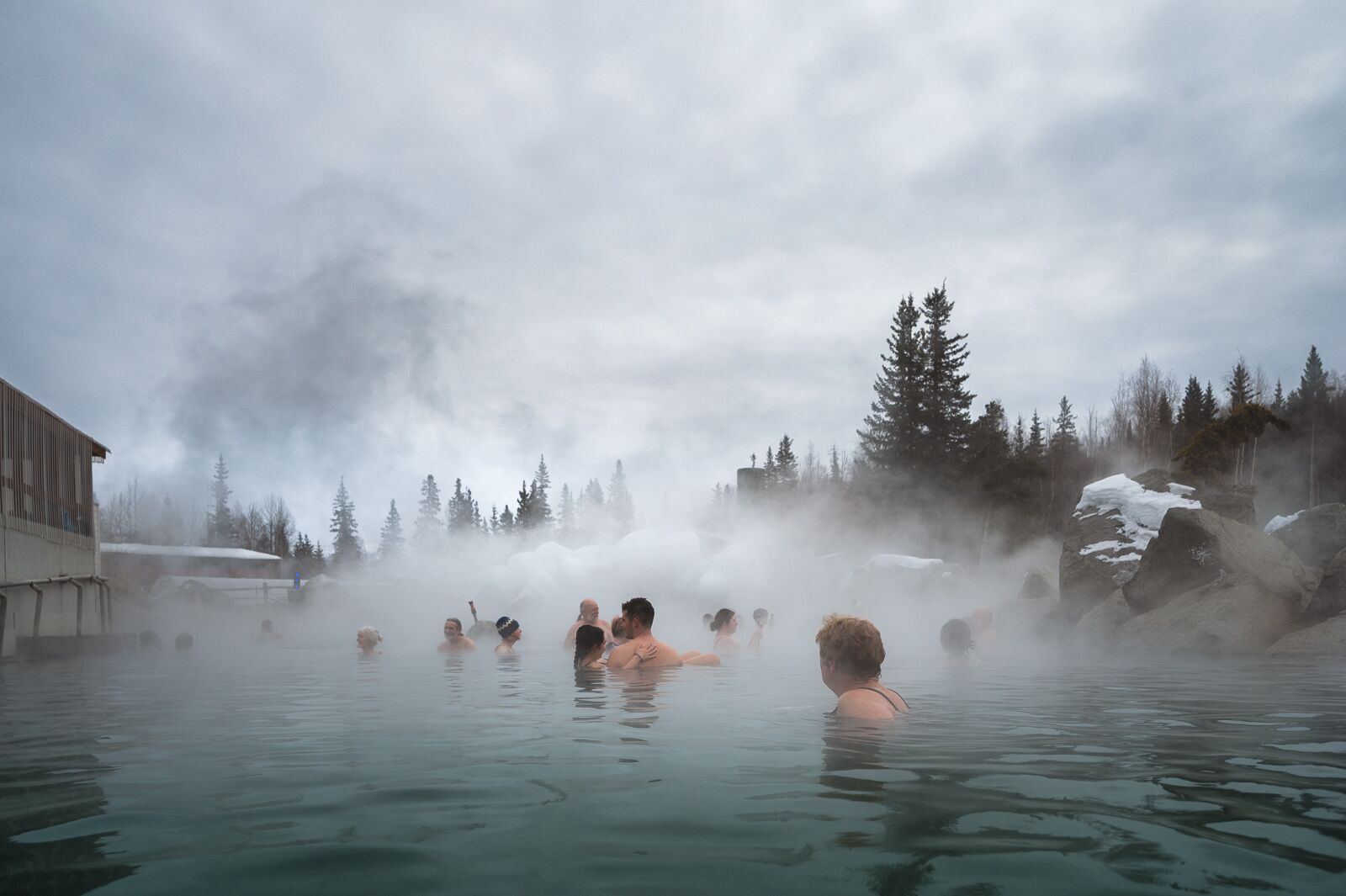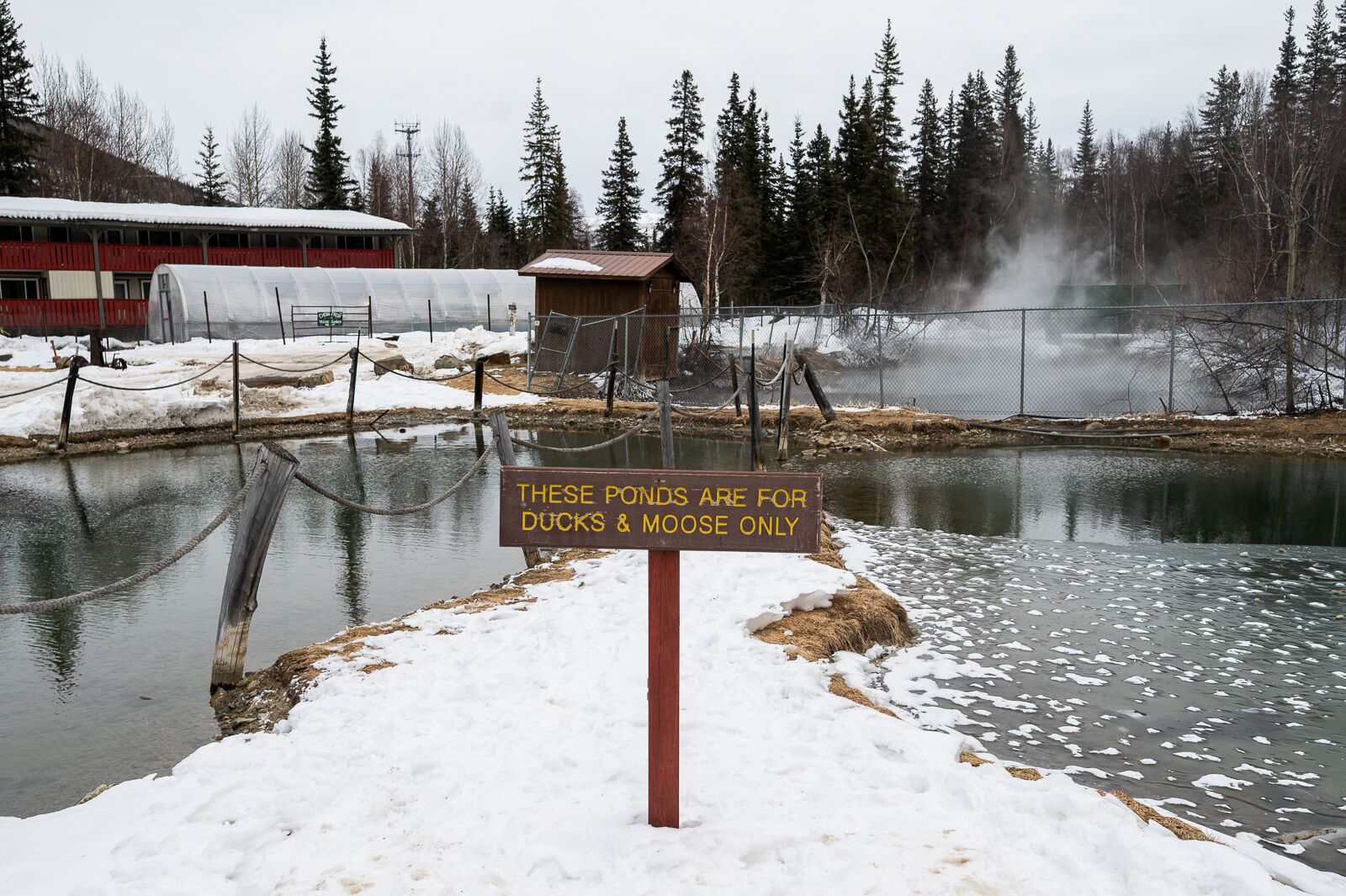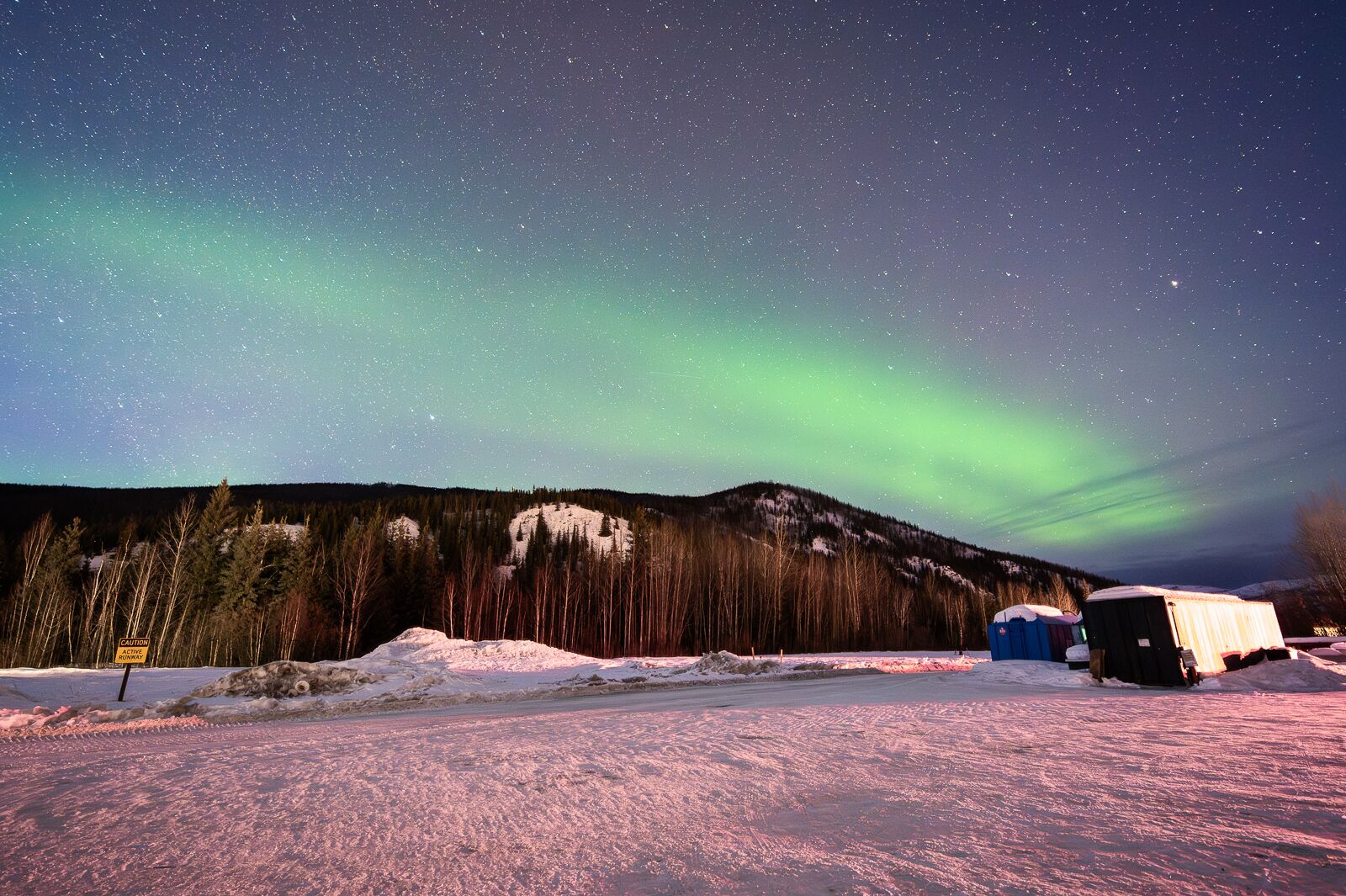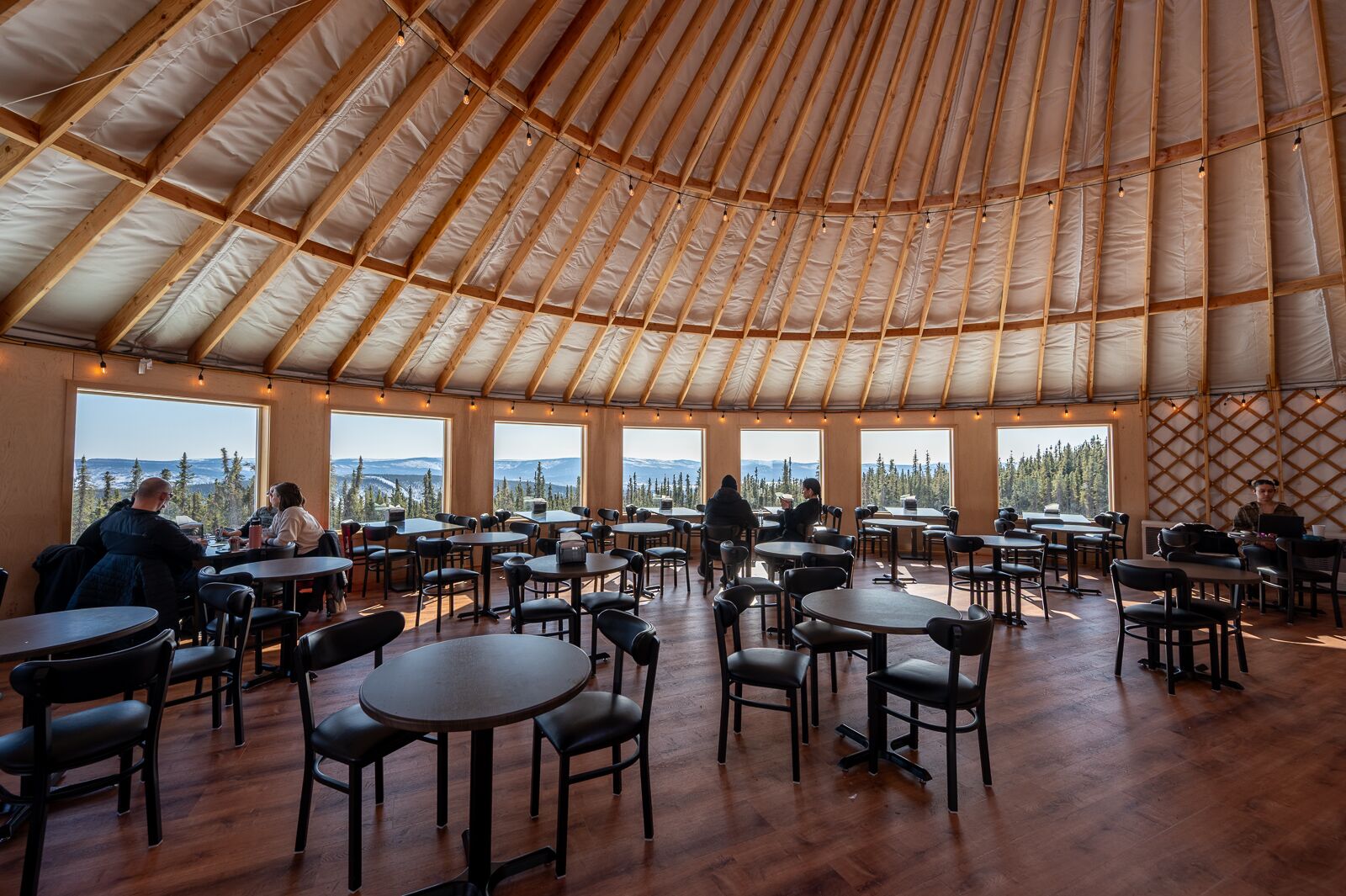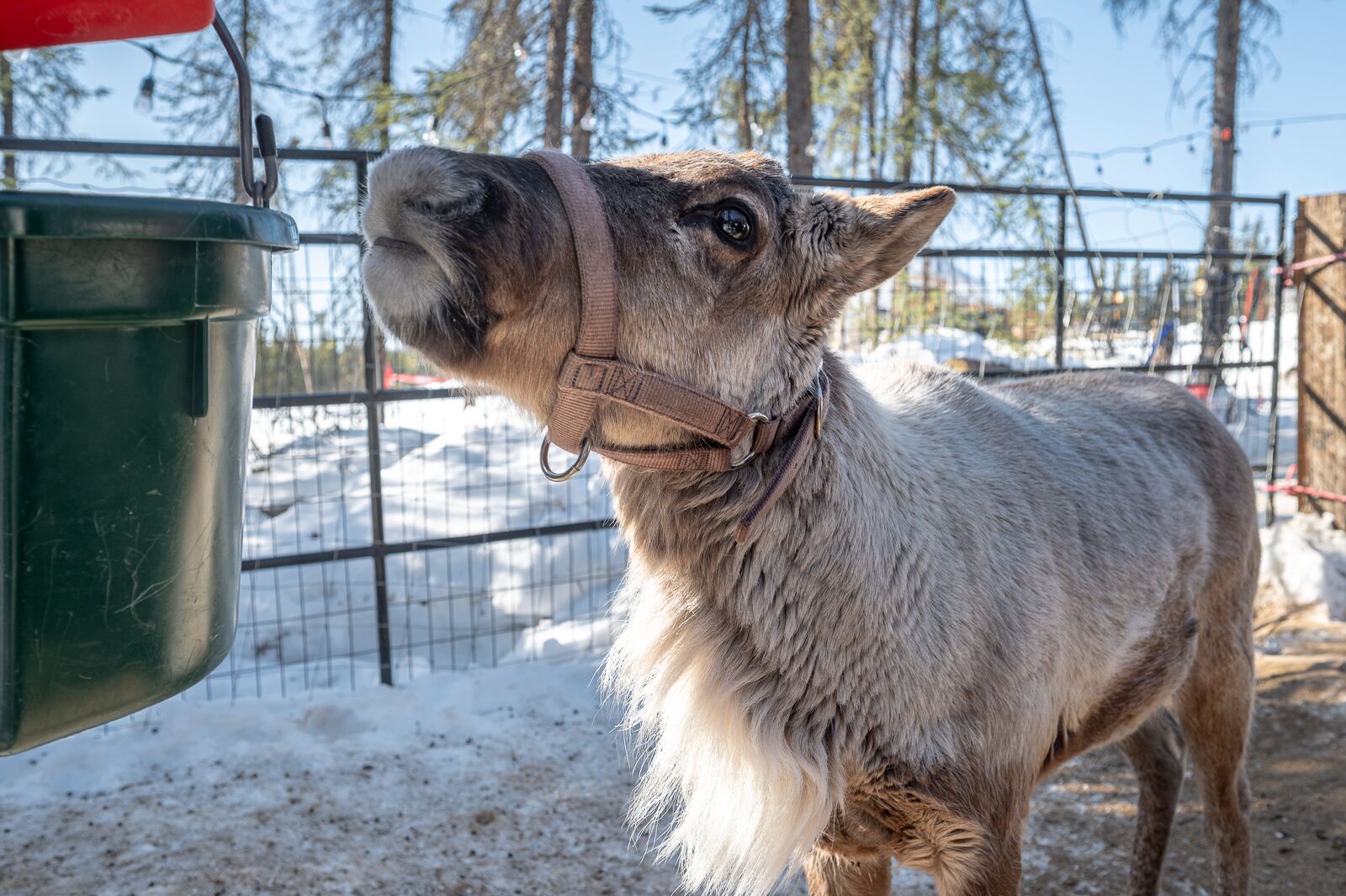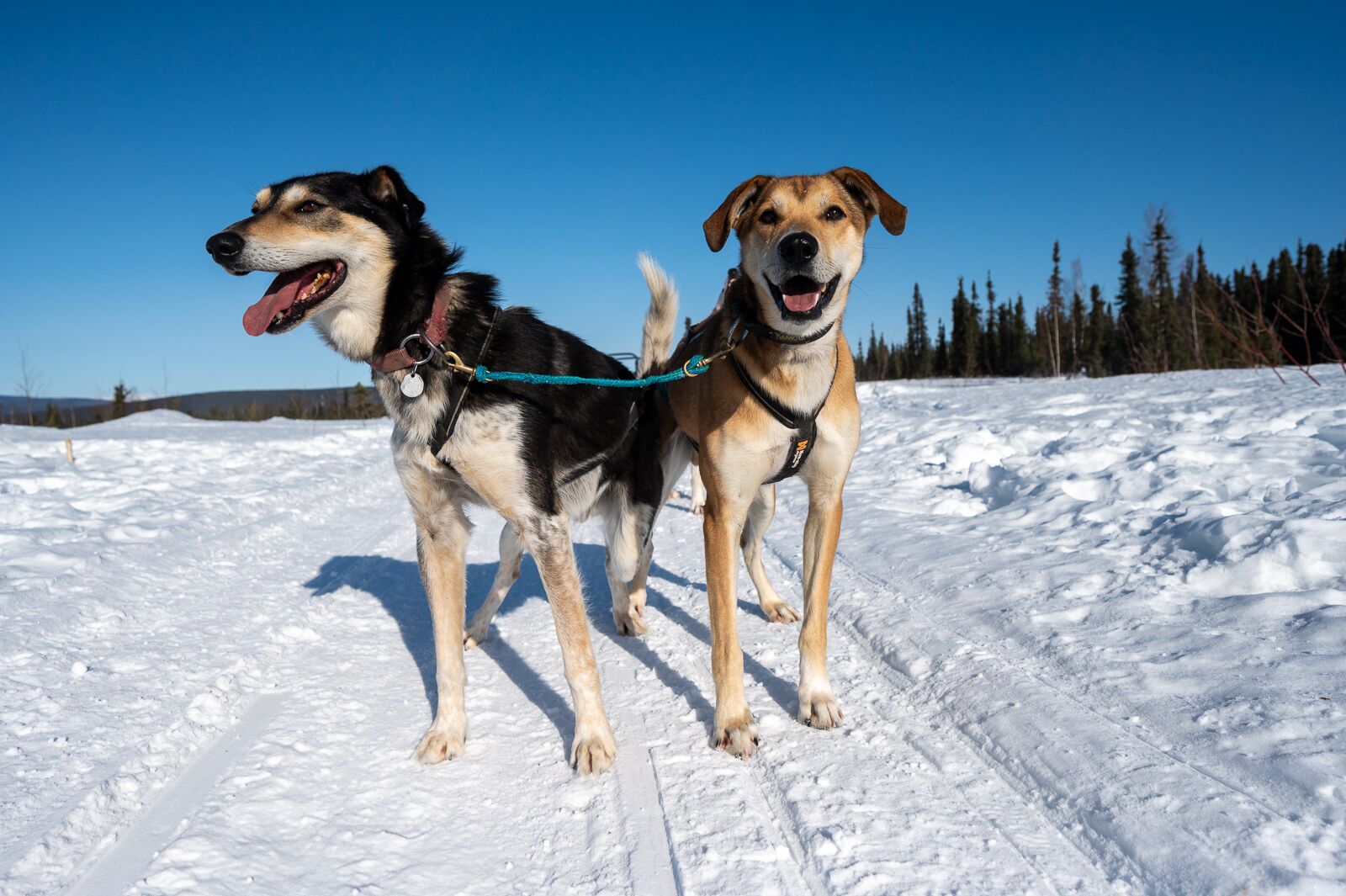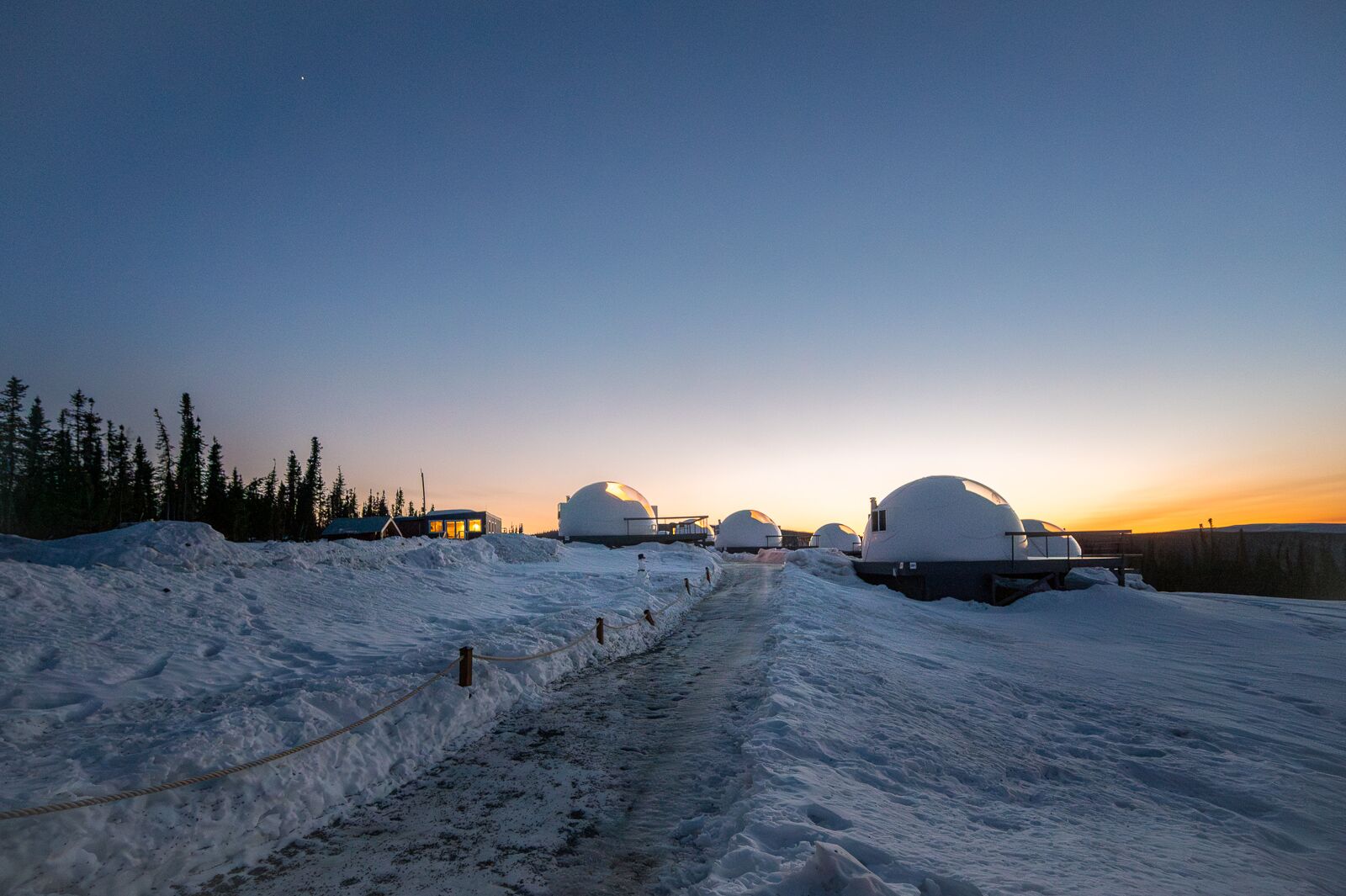Camera Roll: Finding the Best of Alaska’s Northern Lights Aboard the Aurora Winter Train
Denali flights, frozen towns, hot springs, and the ever-present northern lights.
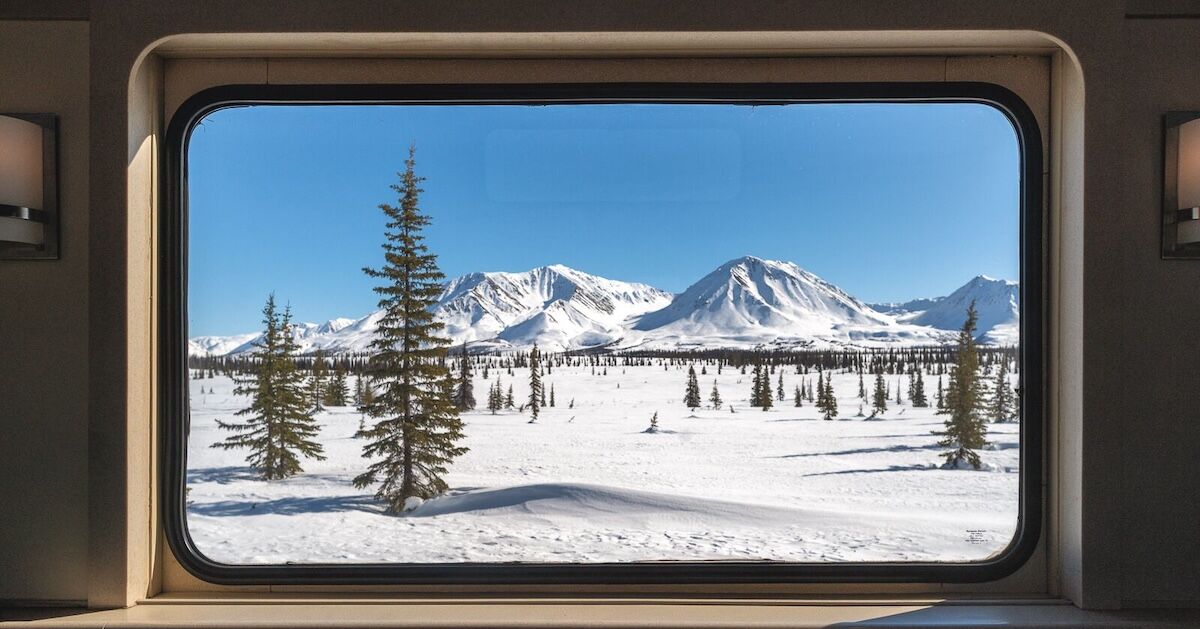
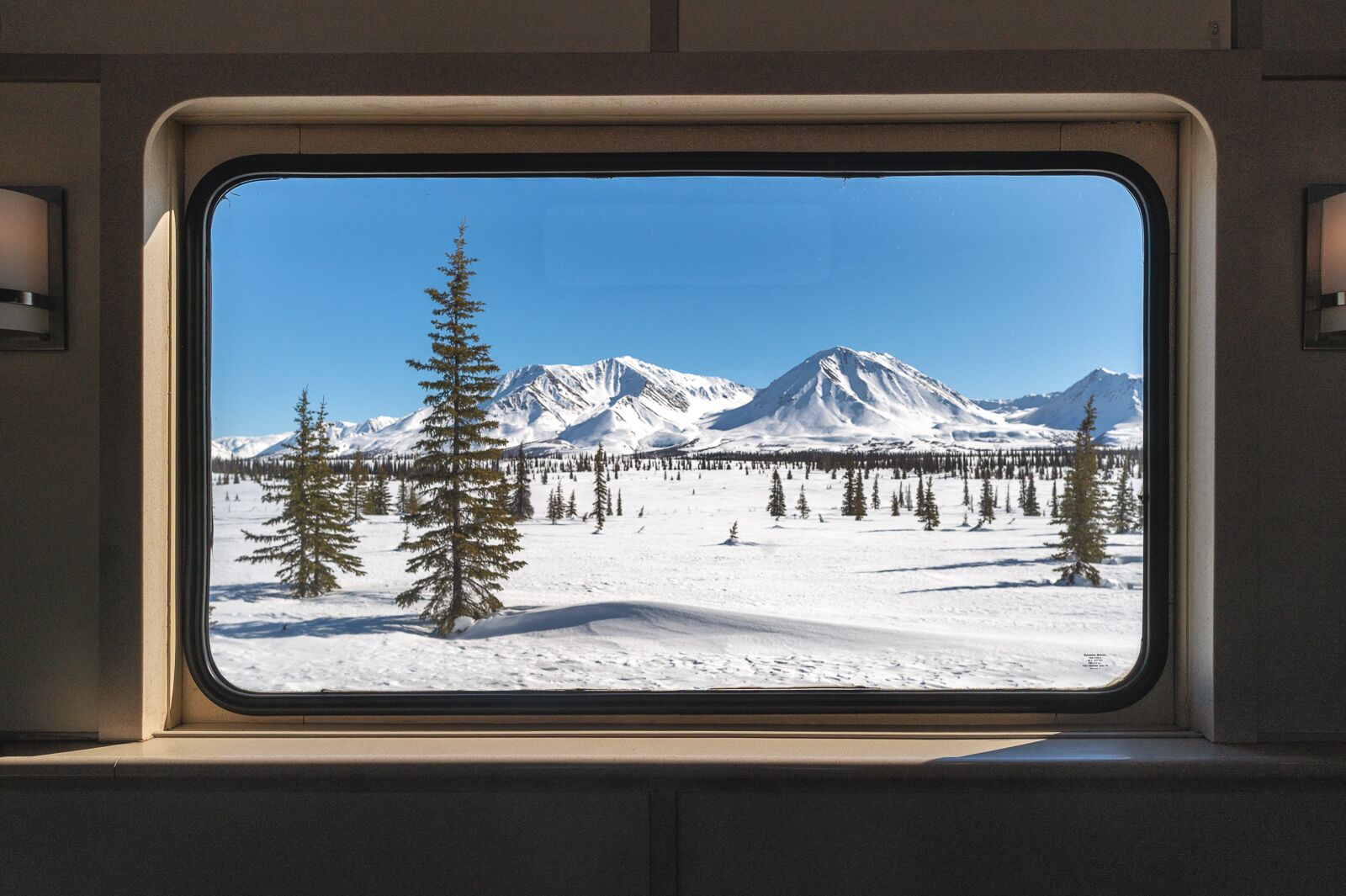
As a photographer, I’ve always dreamed of capturing Alaska and the northern lights. When I heard about the Aurora Winter Train and the many ways it connects travelers to remote parts of Alaska in the cold winter months, it seemed too good to be true. From September to May, The Aurora Winter Train, operated by the state-owned Alaska Railroad, is a seasonal gateway that allows both locals and tourists to explore the winter highlights of The Last Frontier. It’s more than just a stunning train journey as well, with spectacular associated experiences like a scenic flight around Mount Denali and seeing the northern lights from the most privileged, unobstructed vantage points.
I arrived in Alaska at the end of March with the primary goal of experiencing and photographing the aurora borealis. However, after a few days traversing the state’s unique landscapes and experiencing winter in a completely different form, I realized my trip was about much more than just the northern lights.
All photos by the author.
First Stop: The Matanuska Glacier
Before boarding The Aurora Winter Train, I went on a day tour of the Matanuska Glacier. Departing from Anchorage, I joined a guided excursion with Greatland Adventures that brought me close to this colossal ice structure. Stretching 27 miles long and 4 miles wide, the Matanuska Glacier is not only the largest glacier accessible by road in North America, it’s a dynamic natural force, changing with every season and every passing moment.
Aboard The Aurora. First Stop: Talkeetna
I departed Anchorage aboard the Aurora Winter Train on a Tuesday morning. The three-hour ride took me to Talkeetna, a historic town with a mining past that has evolved into the basecamp for climbers heading to Mount Denali. During the journey, I tried reindeer sausage for the first time as part of a delicious breakfast and admired the views through the train’s large windows. We arrived in Talkeetna exactly on time.
At first glance, Talkeetna looked like an isolated speck in an endless expanse of snow. Its frozen streets and sparse population hinted at solitude. However, it didn’t take long for the town’s true spirit to emerge. I was met at the train depot by Sarah Birdsall, owner of Talkeetna Cottages and local author specializing in Talkeetna’s haunted history. She picked me up, along with a few other train travelers, all of us surprised by the lack of Uber or taxi services. I experienced frontier hospitality first-hand while we were driving around town delivering the group of new arrivals to their respective Airbnbs. The people who live here know each other, share stories, and rely on one another in ways that city life rarely allows.
After settling in, I hopped on a flightseeing tour with Flyk2. Minutes after boarding a small bush plane — and I was lucky enough to snag the copilot seat — I found myself soaring above the peaks and glaciers of Denali National Park. The views became more impressive as we neared Mount Denali, and I even forgot about my camera for a while — a weird occurrence since I came to Alaska in large part for the opportunity to photograph all that I saw. But the best part was yet to come. Weather conditions were favorable and we managed to land on a glacier in the middle of the mountains. The following 20 minutes were the quickest — and most exhilarating — of my life as I explored the pristine snowfield high above the peaks, where all perspective was lost and there was no other sound than my boots against the snow.
My first encounter with the northern lights
Back in town, I walked to the Talkeetna Riverfront Park to scout for a good location to photograph the aurora later that night. The frozen Talkeetna River and the park cabins made excellent backdrops. I went to bed early and set some alarms to wake me in the middle of the night. I downloaded several apps and monitored various weather pages for data I couldn’t quite decipher — but as far as I could tell everything was looking favorable. Now it was a waiting game.
I finally decided to go out at about 3 in the morning. I layered up as best as I could, set my camera to what I imagined were the ideal settings for aurora photography, mounted it on my tripod, and headed out. The Talkeetna streetlights surrounded me, but even under that glare I was able to spot what looked like fast-moving clouds overhead. That could be them, I thought.
I made my way to the river, expecting to encounter at least another photographer or some people from the train. Instead, the town was completely empty, and soon I left the streetlights far behind. My eyes adjusted to the darkness as I reached the riverfront, and I began to see the aurora clearly for the first time, suddenly picking up intensity and crossing the sky above me. I was soon surrounded by the northern lights, alone in the middle of the night with just the sound of distant crackling ice to mark the silence.
A snowshoe tour and a better understanding of Alaska
I spent the next day in Talkeetna. After a lazy morning and a great breakfast at Conscious Coffee, I joined a guided snowshoe tour with Alaska Nature Guides. It was just me and my guide, Bernard, and he quickly tuned into my interests. Soon, we were talking almost exclusively about the local flora and fauna and how everything transforms with the seasons.
In that moment, I realized that my preconceptions of winter in Alaska were shifting. I had always imagined it as remote, wild, and cold, but what I encountered was a wilderness that pulsed with life. Animal tracks crisscrossed the snowy landscapes everywhere I turned and signs of vegetation were everywhere to be found, ready to reemerge after the long winter months.
As we stopped for a cup of hot chocolate and homemade cookies by the river, Bernard mentioned that he owned a cottage high in the mountains north of Talkeetna. When I asked him what he found so attractive about such remoteness, he explained that it was precisely that isolation that called to him. To people like Bernard, the sparse human interactions in these remote areas make the few that exist feel all the more profound, and the resulting community bonds are deeply rooted. In his words, cities are the loneliest places one can be.
From Talkeetna to Fairbanks: The final stretch of the Aurora Winter Train
I boarded the train at the same time I was dropped off two days earlier. The remaining eight-hour journey to Fairbanks traverses the snow-capped peaks of the Alaska Range toward the inner part of the state (the Interior, as locals call it). Although eight hours might sound long, the combination of comfortable seating, the ever-changing landscape streaming past the windows, and the regular trips to the dining car for lunch and dinner made the ride feel like a breeze.
This easy pace was enhanced by the constant chatter over the PA system from the Alaska Railroad team. Their interesting remarks about the surrounding landscape, historical bits about the railroad, and timely wildlife spotlights added an extra layer of depth to the journey and made the entire experience feel more engaging.
Fairbanks and beyond
I had a short stay in Fairbanks before I left the next morning for Chena Hot Springs, a mountain resort famous for its thermal outdoor lake and its prime aurora viewing opportunities. Before hitting the road, I enjoyed a delicious smoked salmon crepe at The Crepery and learned a great deal about the natural and cultural history of the Interior at the Morris Thompson Cultural and Visitors Center, a must-visit spot for anyone in Fairbanks.
At Chena Hot Springs, I spent an entire day in full indulgence. The outdoor thermal lake is the highlight of this secluded mountain resort, and I couldn’t resist going into the pools immediately after checking-in. Although going outdoors in Alaska in the winter while wearing nothing more than a bathing suit can be a little intimidating at first, the hot water quickly made me forget that the temperature outside was a chilly 5 degrees Fahrenheit. The resort offers plenty of activities you can mix in with your thermal soaking sessions: geothermal tours, dog sled rides, an ice museum experience, a cozy restaurant, and aurora viewing tours.
That night at Chena Hot Springs was my second chance to see the northern lights. The resort features a designated dark room where guests can wait in comfortable seclusion until the aurora begins its display. Just after midnight, as the lights started to appear, about 50 people moved between the room and the surrounding areas, all eagerly anticipating the spectacle. Initially, there was only a soft green glow near the horizon, but soon the aurora picked up strength and striking green and purple stripes began dancing swiftly above the mountains. Impressive as it was, I’ll always prefer that first night I saw the lights by myself in Talkeetna.
On my last day in Alaska, I visited Borealis Basecamp, located on 100 acres of boreal forest. Here, you can stay in luxury geodesic igloos with transparent roofs specially designed to watch the aurora from the comfort of your bed.
The lodge is packed with activities, from dog-sledding and snowmobile adventures to helicopter tours and even the opportunity to meet local reindeer. The property is also home to Latitude 65, where I enjoyed the best food of my trip, courtesy of chef George Easter. He curates the menu with an emphasis on locally sourced ingredients and innovative takes on Alaskan dishes. Even though I didn’t get to spend the night in one of the igloos, visiting Borealis Basecamp was undoubtedly one of the highlights of my trip.
Alaska can feel like a hard to reach place for many travelers. The massive state has no shortage of conditions to contend with once there as well. Yet planning my trip with the Aurora Winter Train and Alaska Railroad Winter Packages made everything comfortable and easy while never losing that essential sense of adventure and remoteness. ![]()
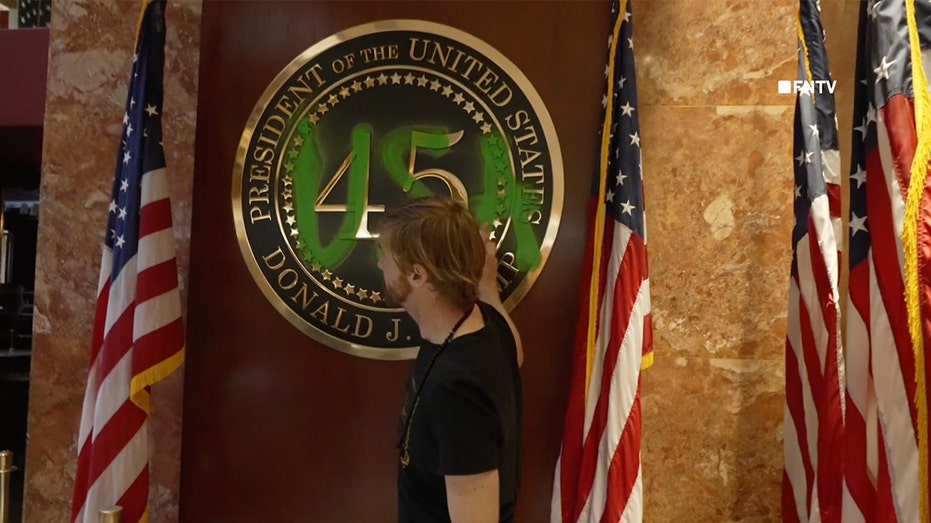
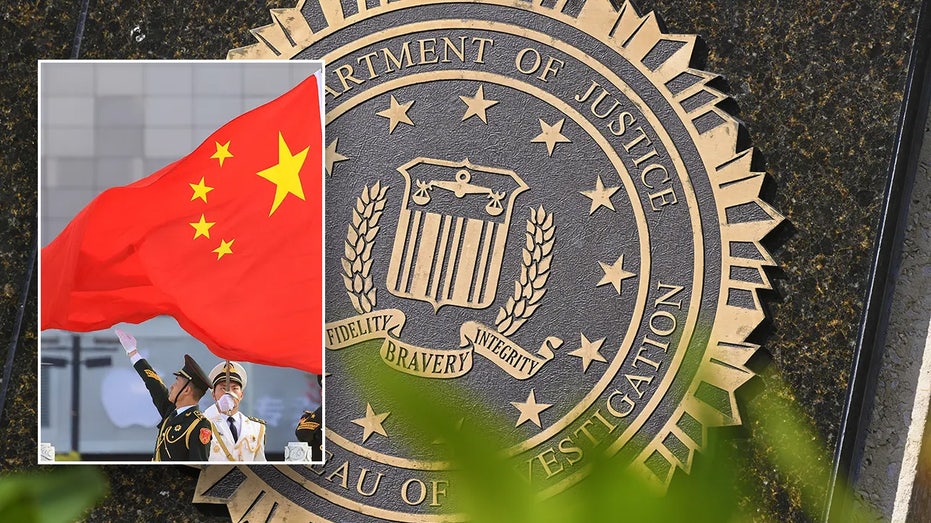
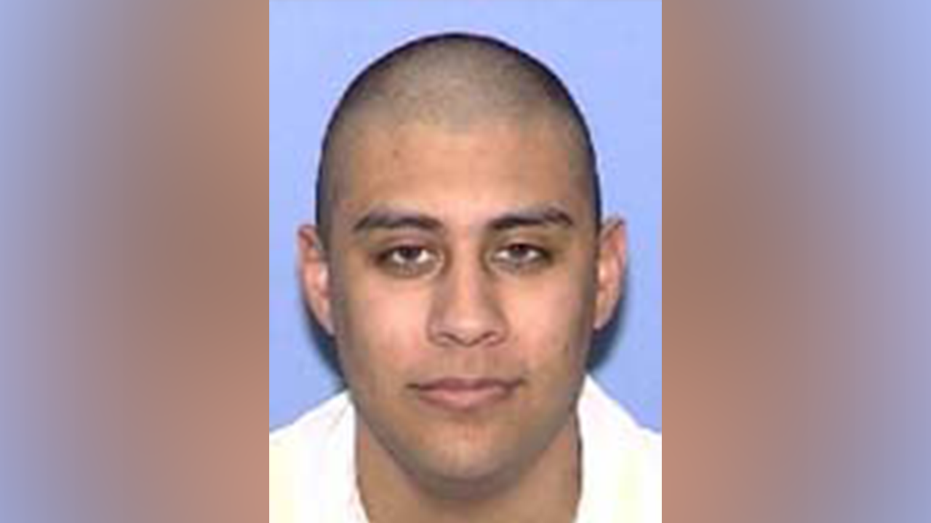














_Olekcii_Mach_Alamy.jpg?width=1280&auto=webp&quality=80&disable=upscale#)






















